32 fun, interesting and bizarre facts about bearded dragons
Reptile lovers will be keen to learn all these interesting facts about bearded dragons
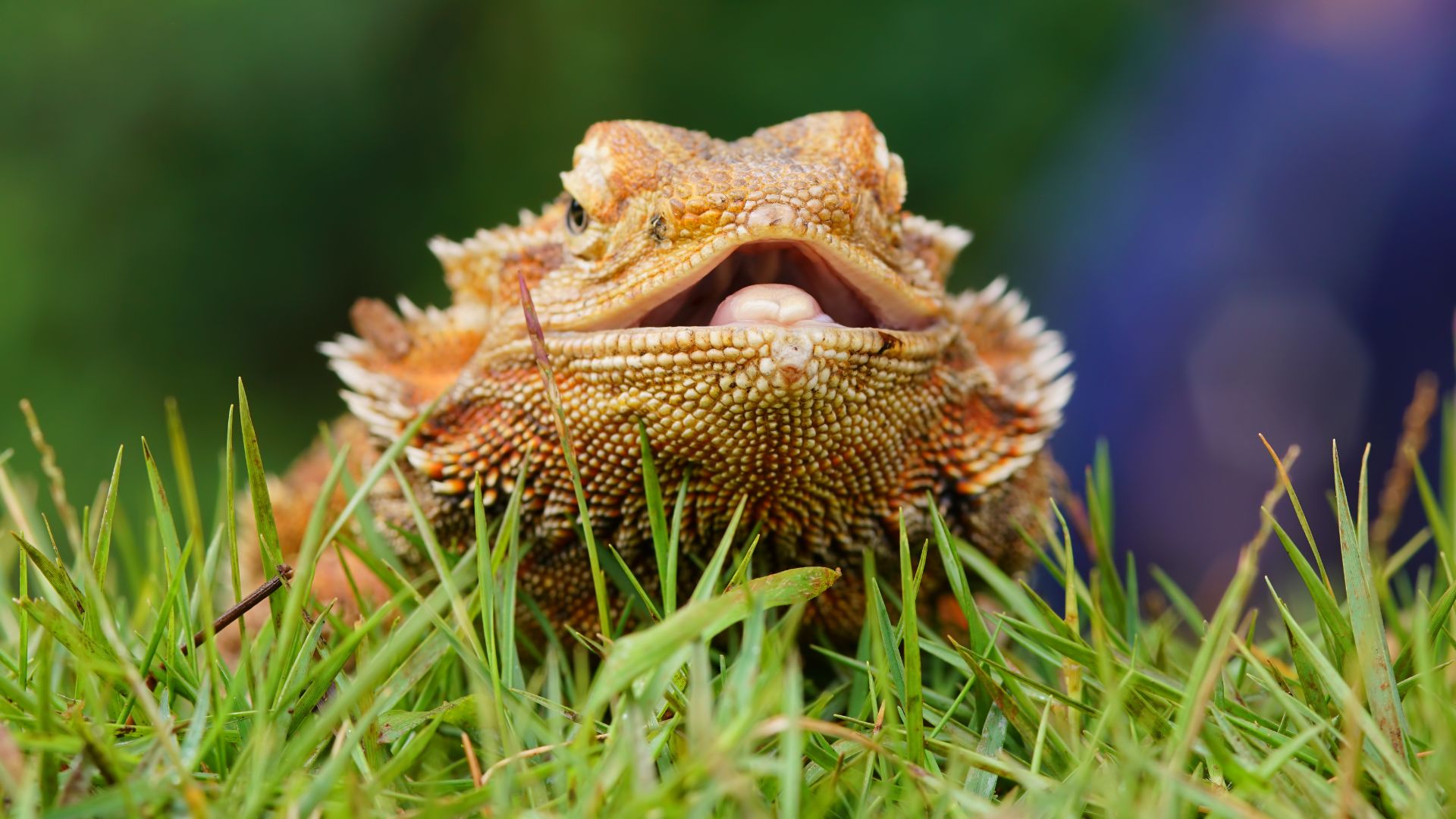
From their ability to change color to the fact that they can pretty much sleep in any position, there is no shortage of interesting facts about bearded dragons.
These reptiles, more informally known as beardies, are one of the most fascinating creatures to be kept as pets – and we don't say this lightly. For starters, they are known (and loved) for having anthropomorphic body language, which helps them communicate to you and other reptiles how they are feeling. They're also known for puffing up their beard as a means of communication, too.
One fact you might not know is that with the best bearded dragon care, these reptiles tend to live longer in domestic settings than they do in the wild. But that's only if you tick off their very specific care requirements, like feeding them a varied diet and keeping their vivarium at the right temperature.
To discover some more interesting facts about these captivating reptiles, keep reading.
32 facts about bearded dragons
1. Bearded dragons hail from Australia
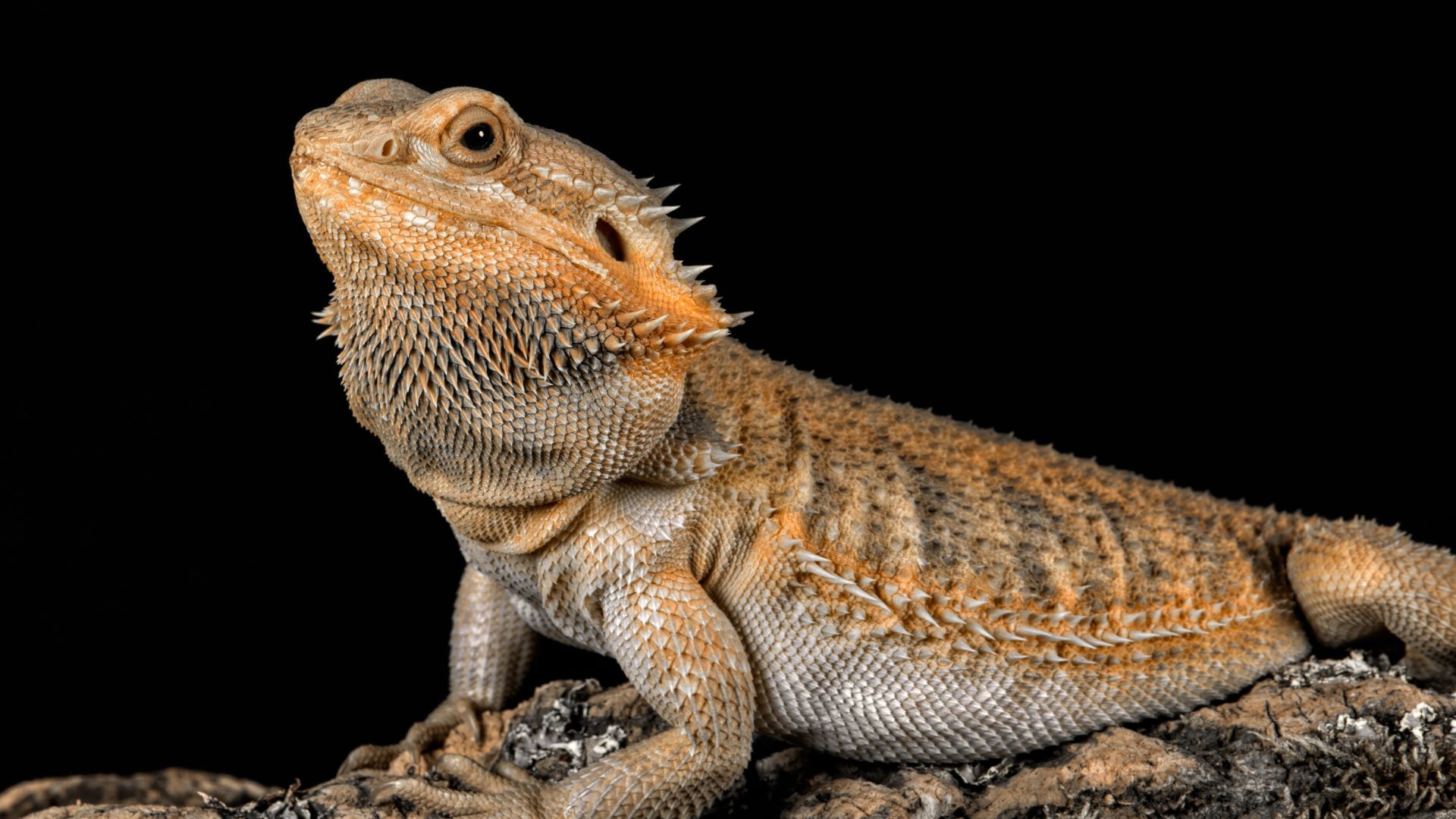
Bearded dragons originate from Australia, so if you are thinking of adopting one then you’ll need to ensure you have everything (and more) your beardie will require to thrive in a different climate.
For example, you’ll need to give them the right habitat to survive, so everything from the right humidity levels to the temperature and lighting to enough water – these are all necessary factors to take into consideration before welcoming one into your home.
2. There are eight types of bearded dragons
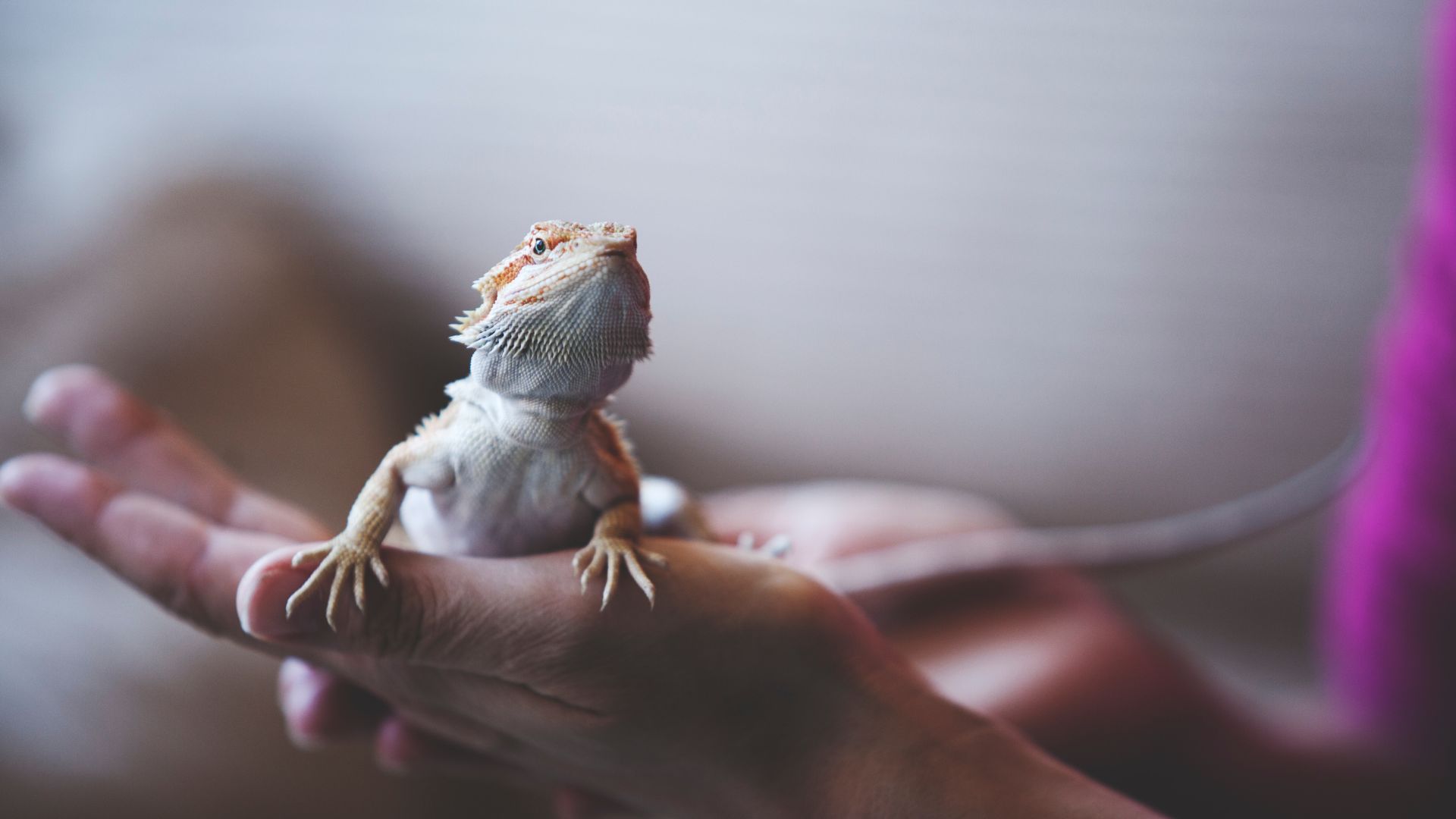
They include the Central Bearded Dragon, Eastern Bearded Dragon, Western Bearded Dragon, Nullarbor Bearded Dragon, Rankin’s Dragon or Lawson’s Dragon, Small-scaled Bearded Dragon, Abrolhos Dwarf Bearded Dragon, and Mitchell’s Bearded Dragon. Experts say all domesticated dragons have been bred from these eight types of bearded dragons.
Get the best advice, tips and top tech for your beloved Pets
3. There is one type that makes the best pet
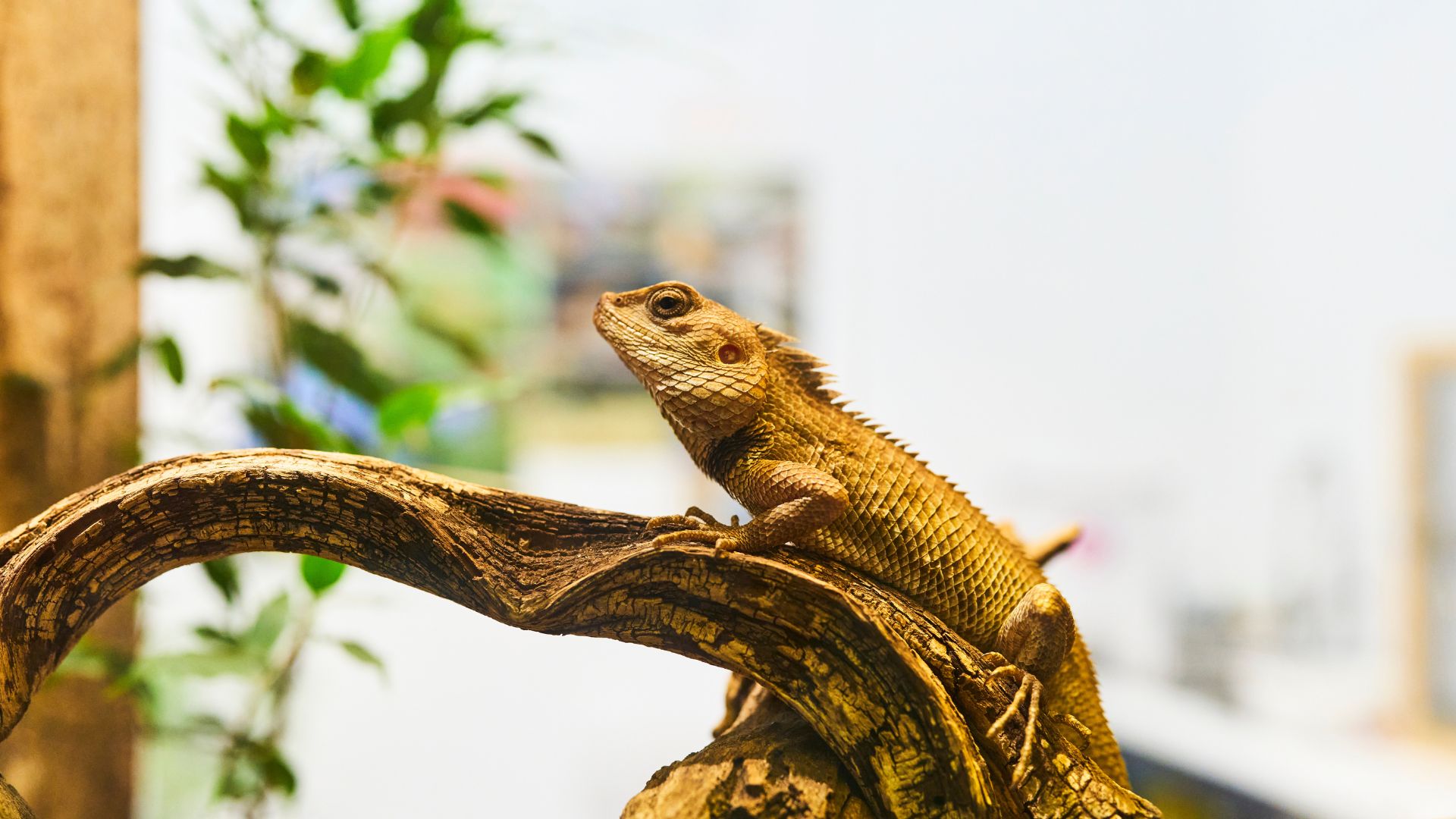
While there might be eight different types of beardies, there is one type of dragon that makes for the best pet: and that's those bred from the Central and the Western (Pogona minor), and the Eastern bearded dragon (Pogona barbata). That’s because these types of dragons have similar needs.
4. Other types are best suited to more experienced owners
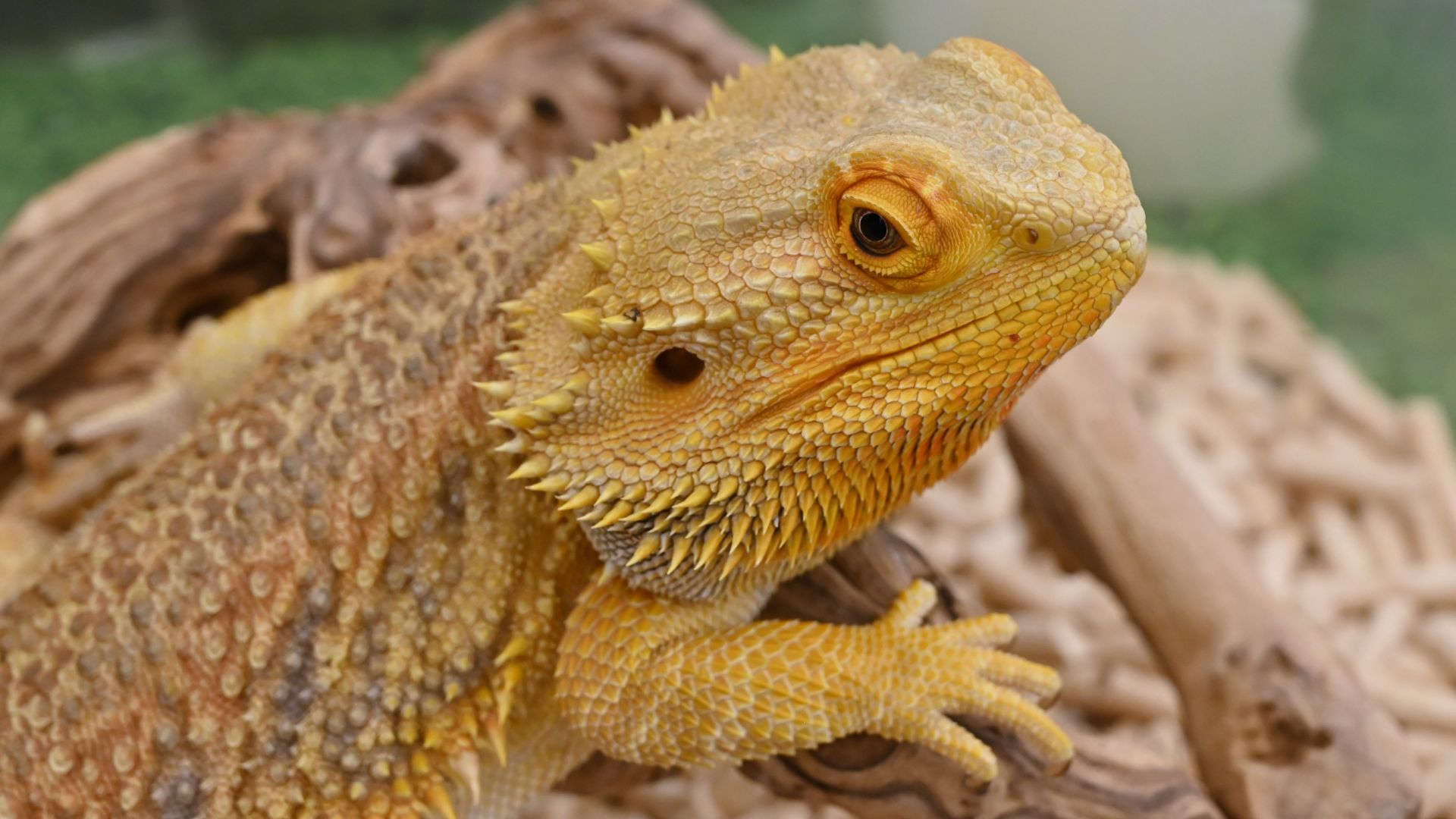
While other breeds of bearded dragons can make great pets, they are best suited to those who have had a reptile before.
It's also best to avoid bearded dragons that are advertised as ‘pygmy’ as these are not a recognized morph type.
5. Beardies are friendly
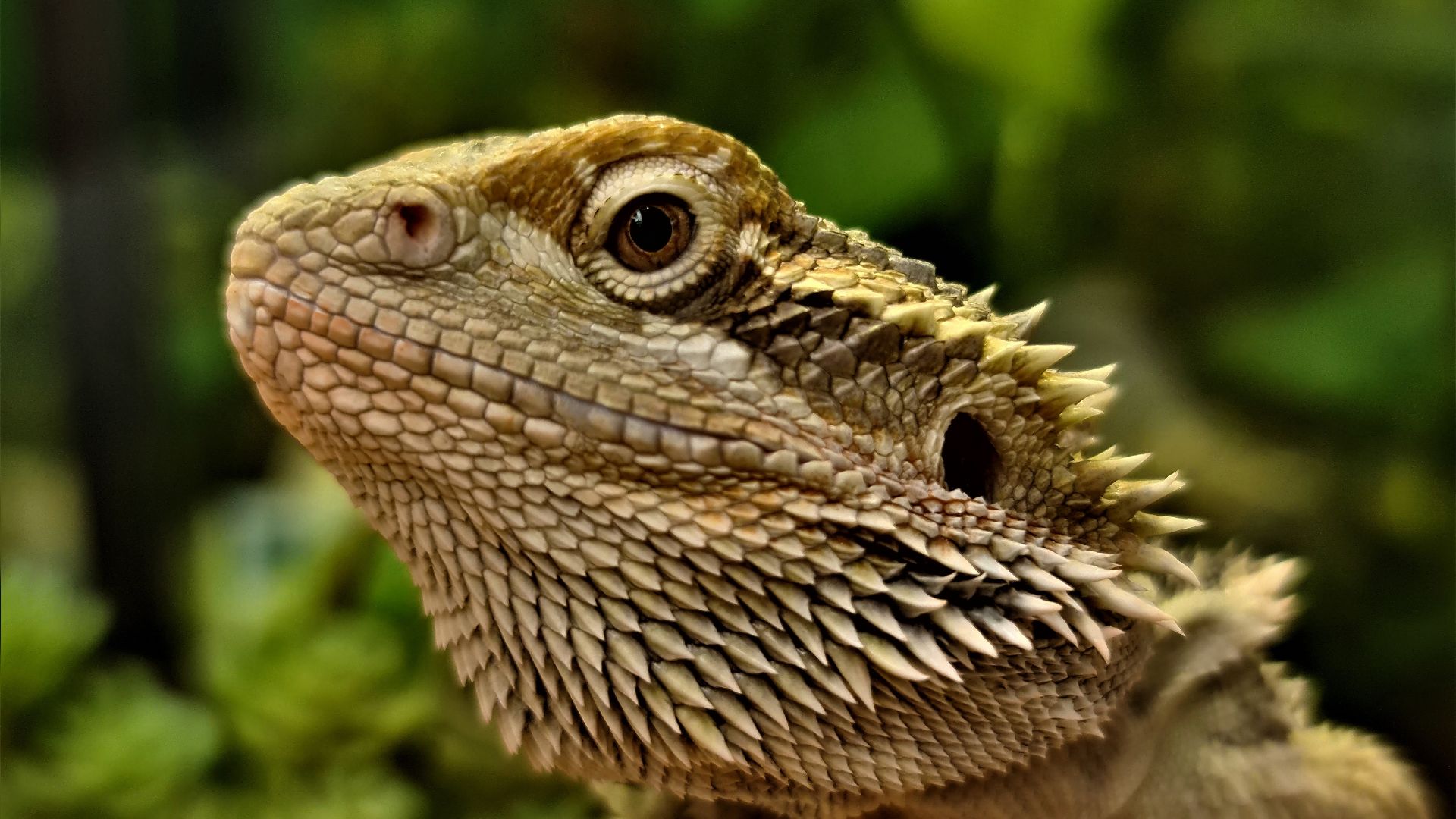
With their scaly skin and their rough beards, bearded dragons might not look like the friendliest of reptiles. But this couldn’t be further from the truth. Beardies are actually quite friendly, which is why they’ve been kept as pets in the US for more than 30 years.
They can also form strong attachments to their humans – so it’s no wonder they have grown in popularity.
6. Bearded dragons can eat dandelions
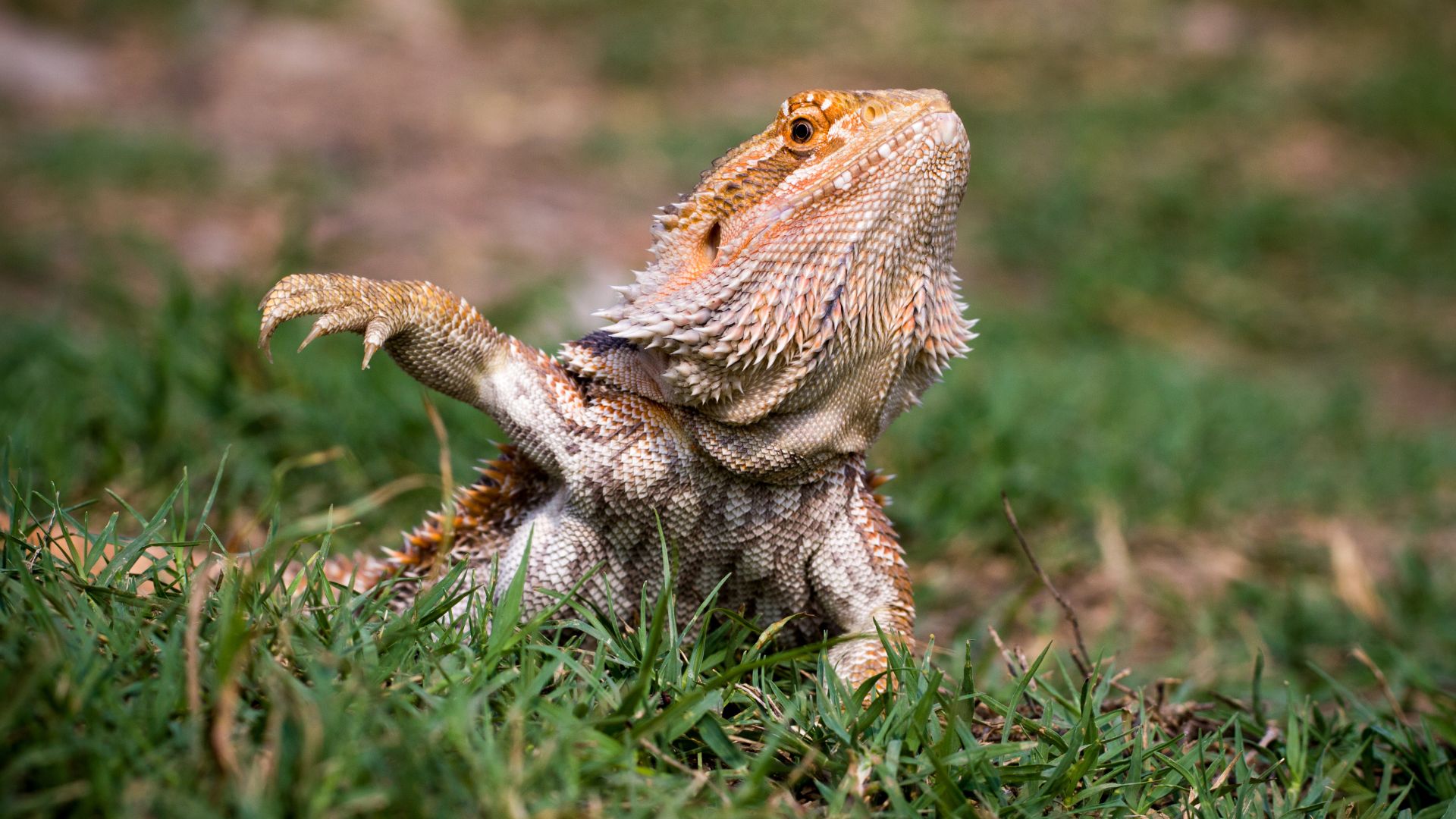
Wondering what do bearded dragons eat? Well, they might hail from Australia, but they are partial to something simple like dandelion greens. Just remember if you are foraging for your beardie, you’ll need to wash plants thoroughly.
7. Bearded dragons can live for up to 12 years
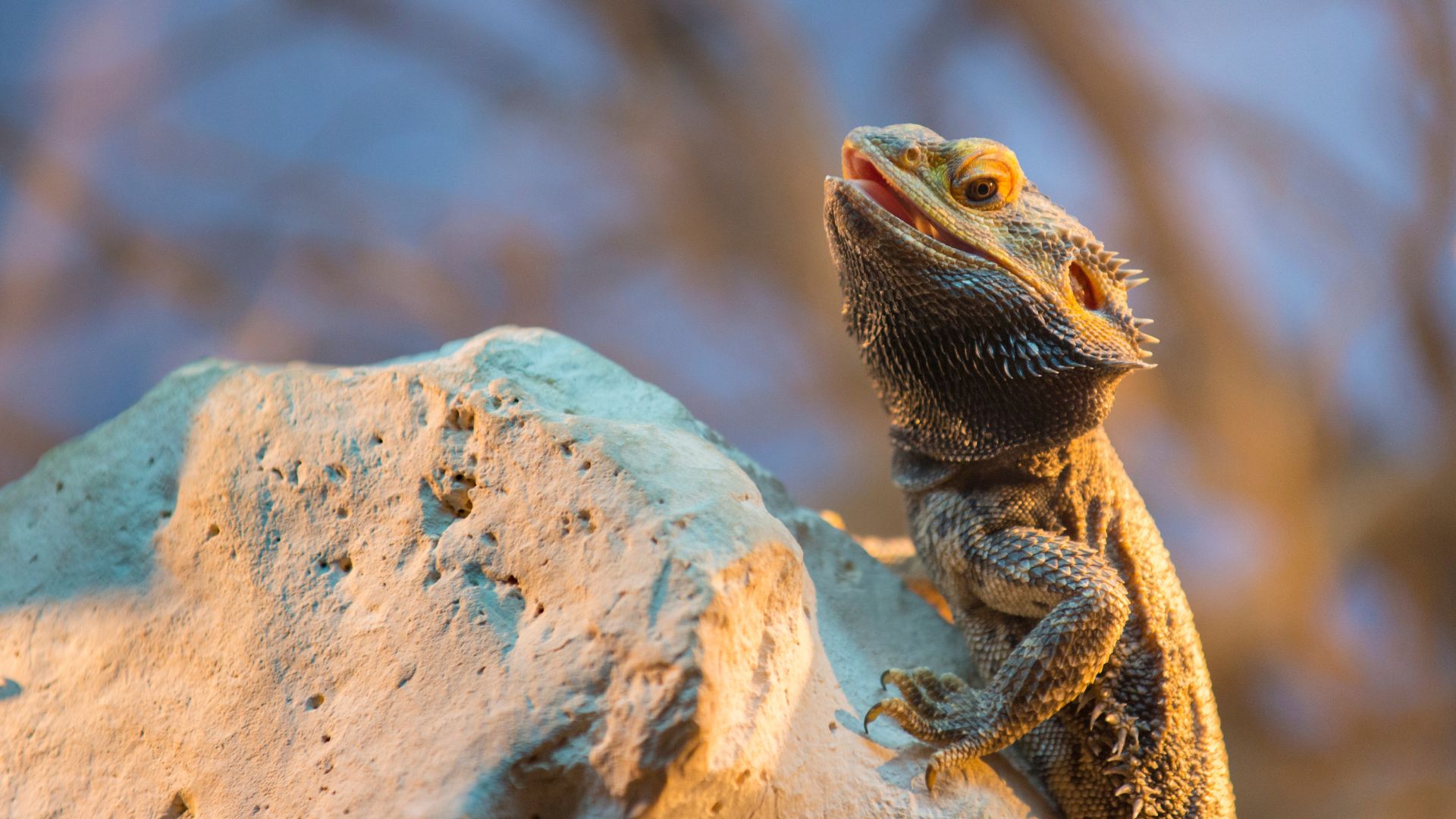
Unsure of how long bearded dragons live? If well looked after and properly cared for, bearded dragons tend to have an average lifespan of eight to 12 years. Though some breeds may live less while others may live longer.
8. They can communicate with their head

If you’ve studied a bearded dragon before you might have spotted their rather interesting anthropomorphic body language that involves them arm waving and head bobbing.
It’s believed these human-like behaviors help beardies to communicate. For example, these characteristics can help them signal interest in mating, display dominance, or show another beardie who is boss. Told you they are fascinating!
9. They can run pretty fast
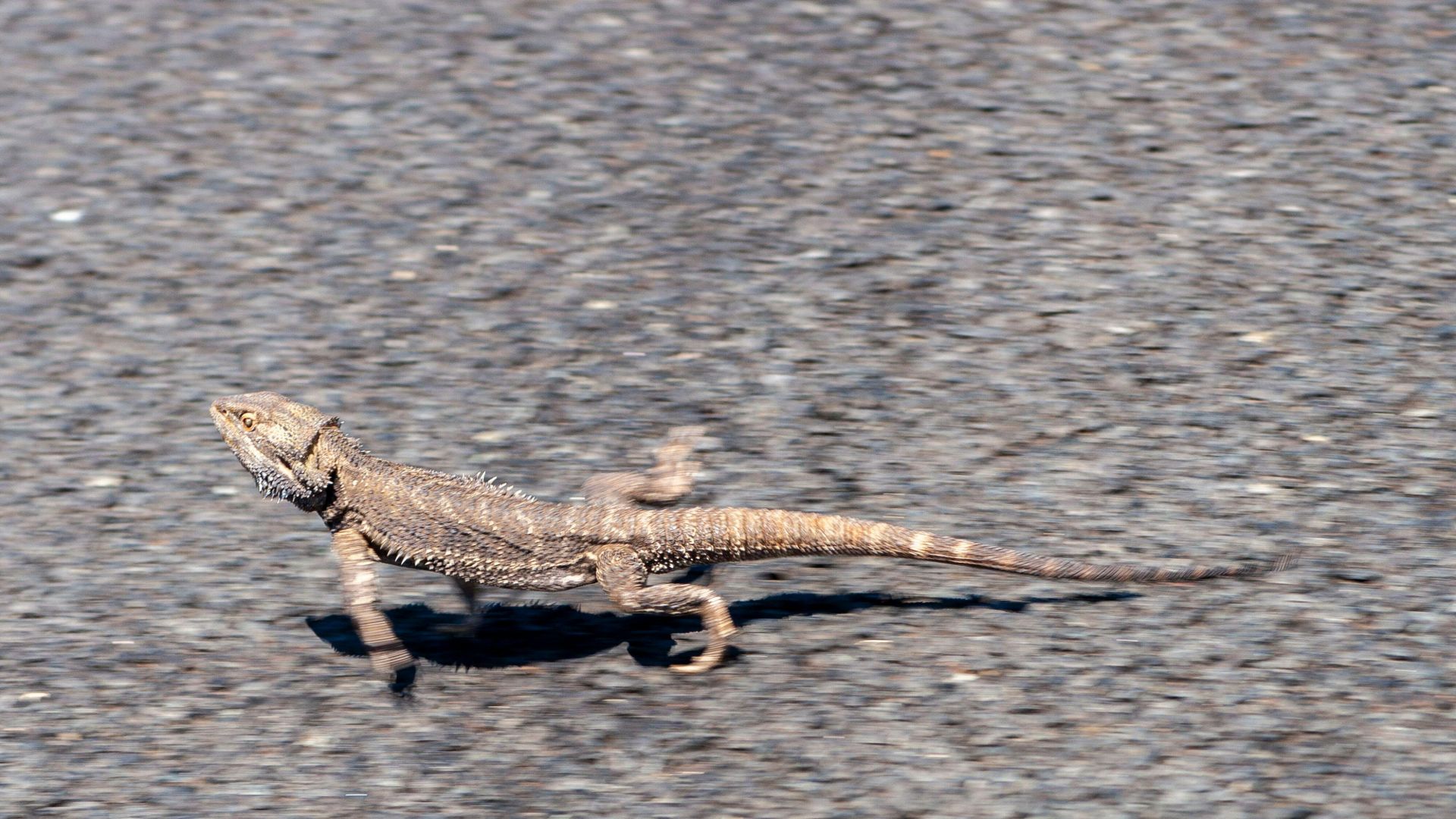
Legend has it that bearded dragons can run up to 9mph, however, domesticated beardies will barely trot this fast. Instead, you’re much more likely to spot your bearded dragon living a very relaxed and sedentary lifestyle.
10. They can change color
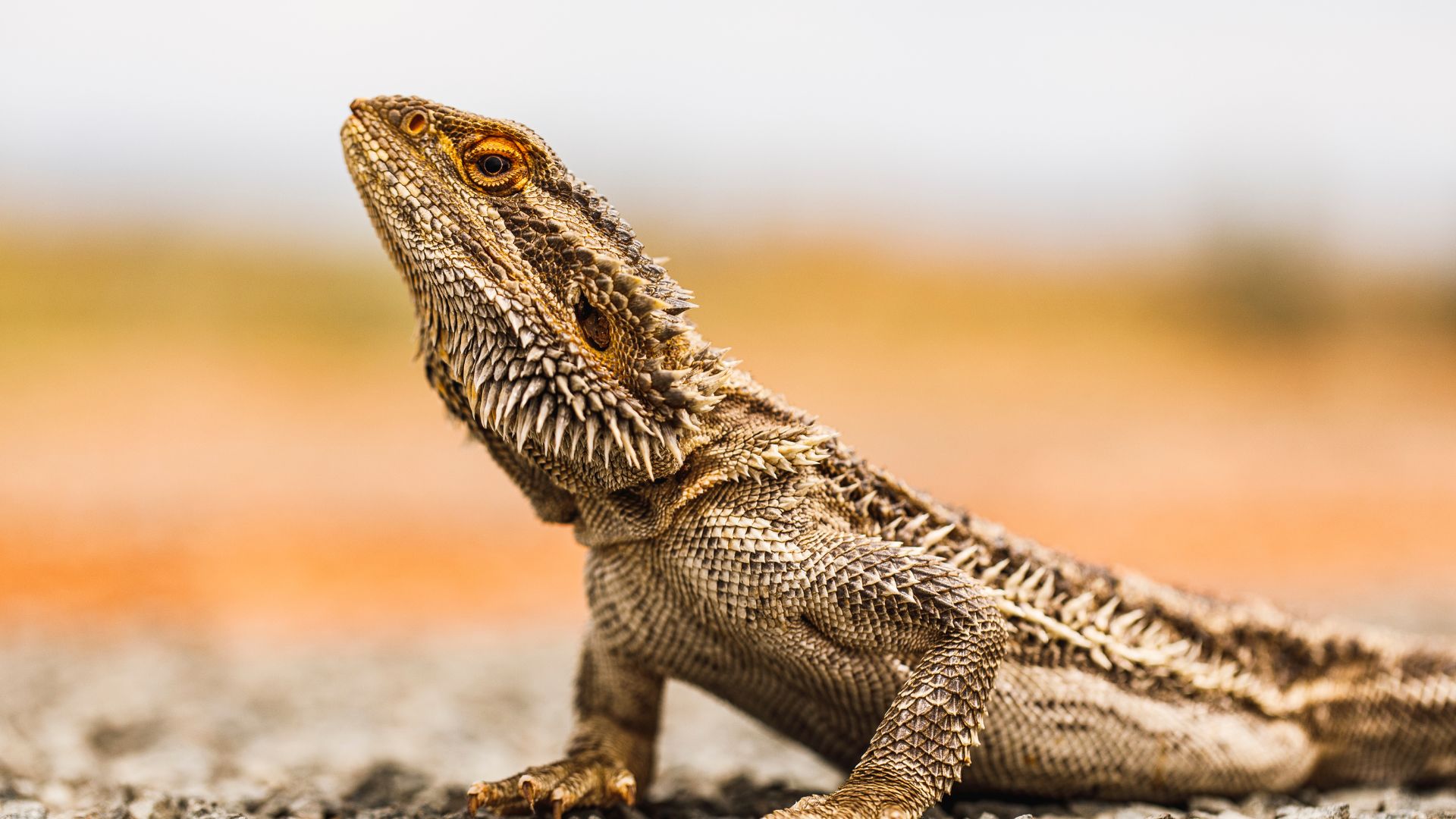
Another character trait they are well known for? Similar to chameleons, which are another type of reptile you can keep as a pet, bearded dragons can change colors.
However, what makes the bearded dragon stand out is that it can isolate what areas it decides to change color. A beardie might change color in the neck region due to social interactions where changes to the back area could be linked to temperature regulation.
11. They need lots of enrichment
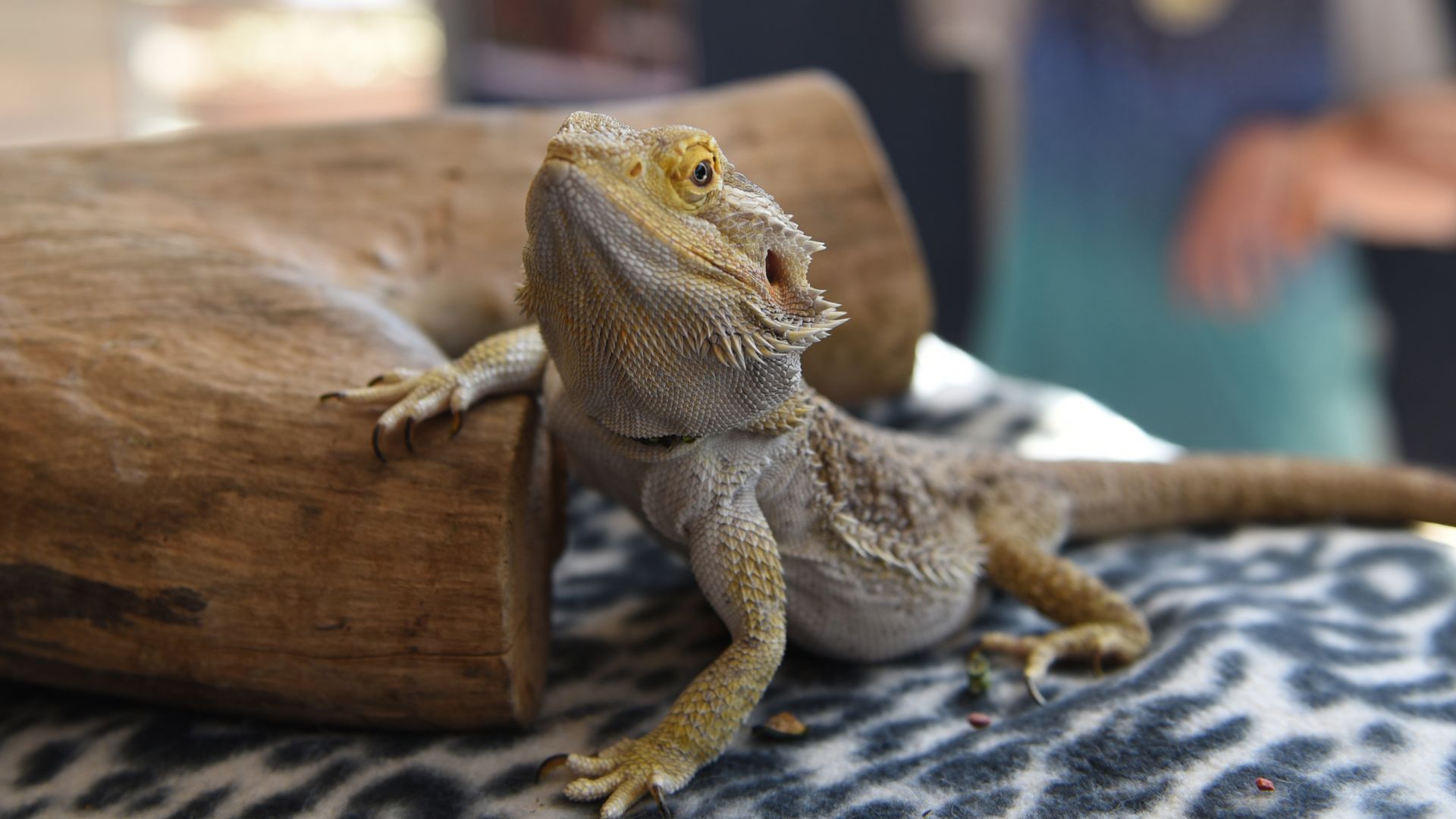
Along with having the right temperature requirements and proper habitat, bearded dragons need lots of enrichment to ensure their health is kept in tip-top condition.
But you won’t have to spend a fortune to ensure they are kept amused. For example, you could take your beardie for a walk, a swim, or let your bearded dragon watch TV with you.
It’s also a wise idea to buy some of the best bearded dragon toys to keep them entertained when you can’t be there.
12. Bearded dragons can climb trees
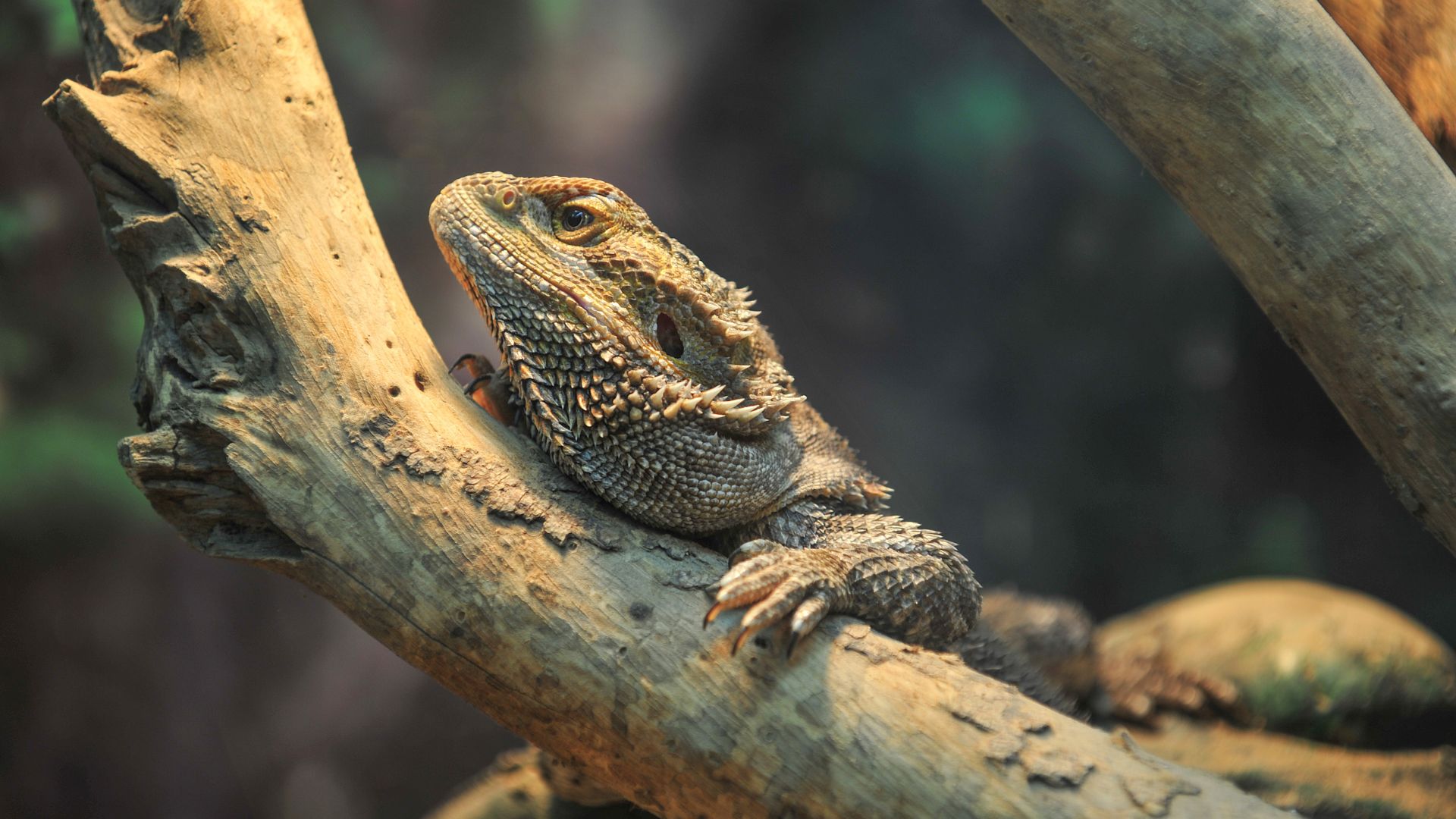
Bearded dragons might spend a huge proportion of their time on the ground, but they are expert tree climbers and will tend to do so when they spot food or if they’re hiding from a predator.
Beardies might also seek out higher heights when they are in search of some sun, to get their all-important hit of vitamin D.
13. You can tell how they are feeling by their chin
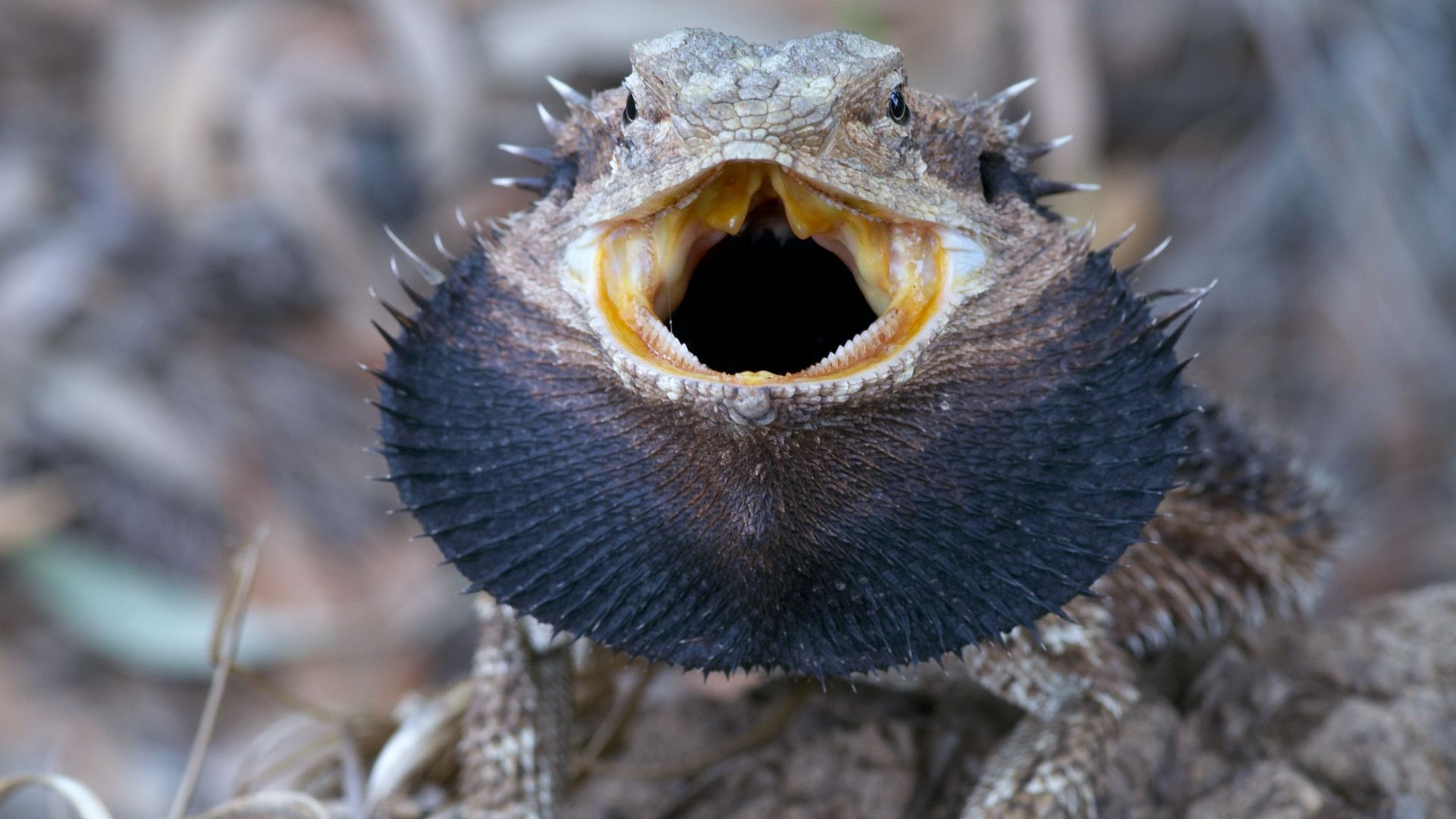
A bearded dragon’s all-important beard is another way that these fascinating creatures communicate.
The reptiles can puff out their beard or change the color of it and this could indicate various things, like feeling threatened, stressed, or aroused.
14. Bearded dragons are illegal in Hawaii
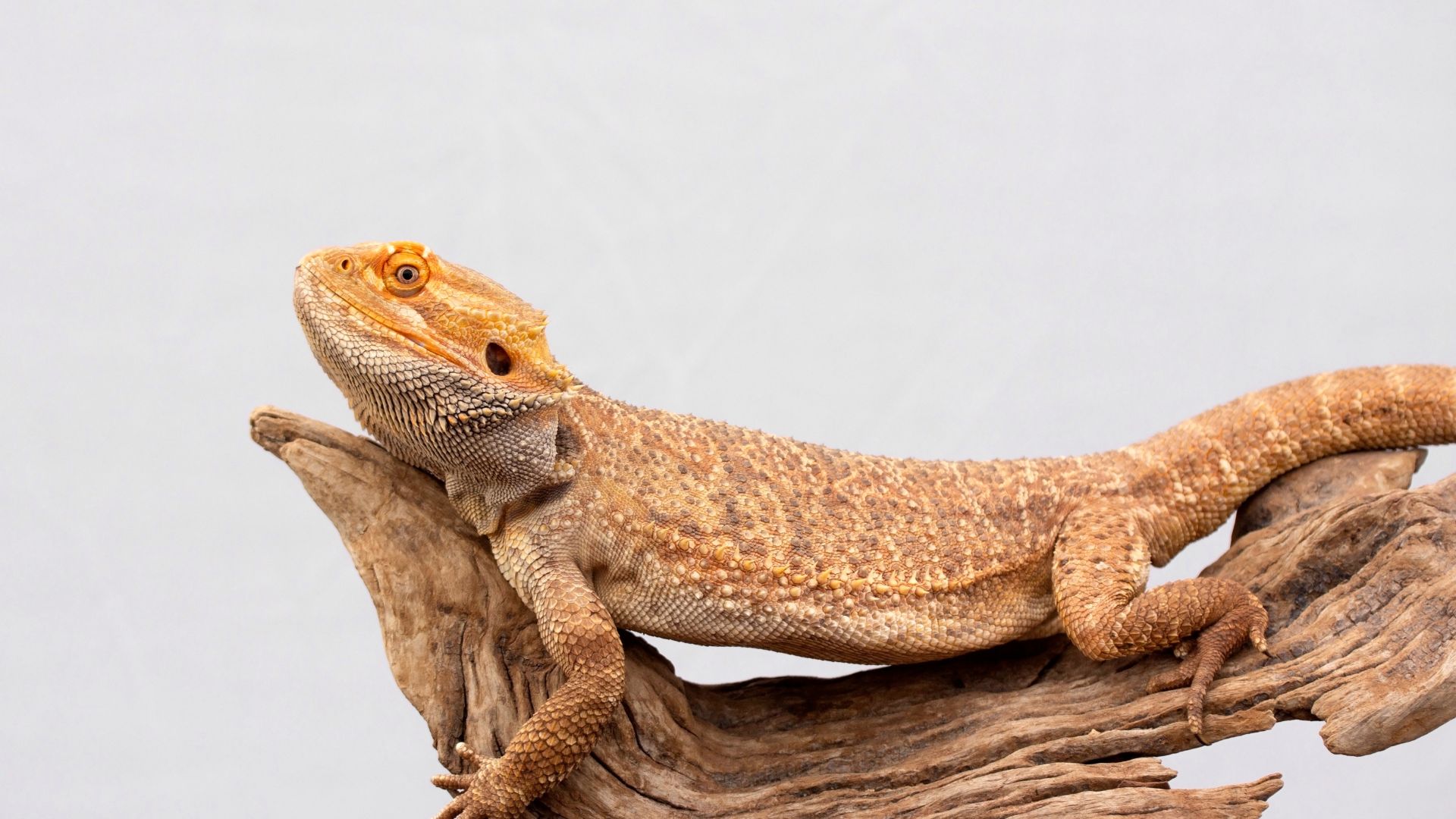
It's true! If you’re thinking of getting a beardie but you live in Hawaii – think again!
Bearded dragons are prohibited in Hawaii as they are considered to be an ‘invasive species’ that could disrupt the state's ecosystem.
15. They’re tiny when born
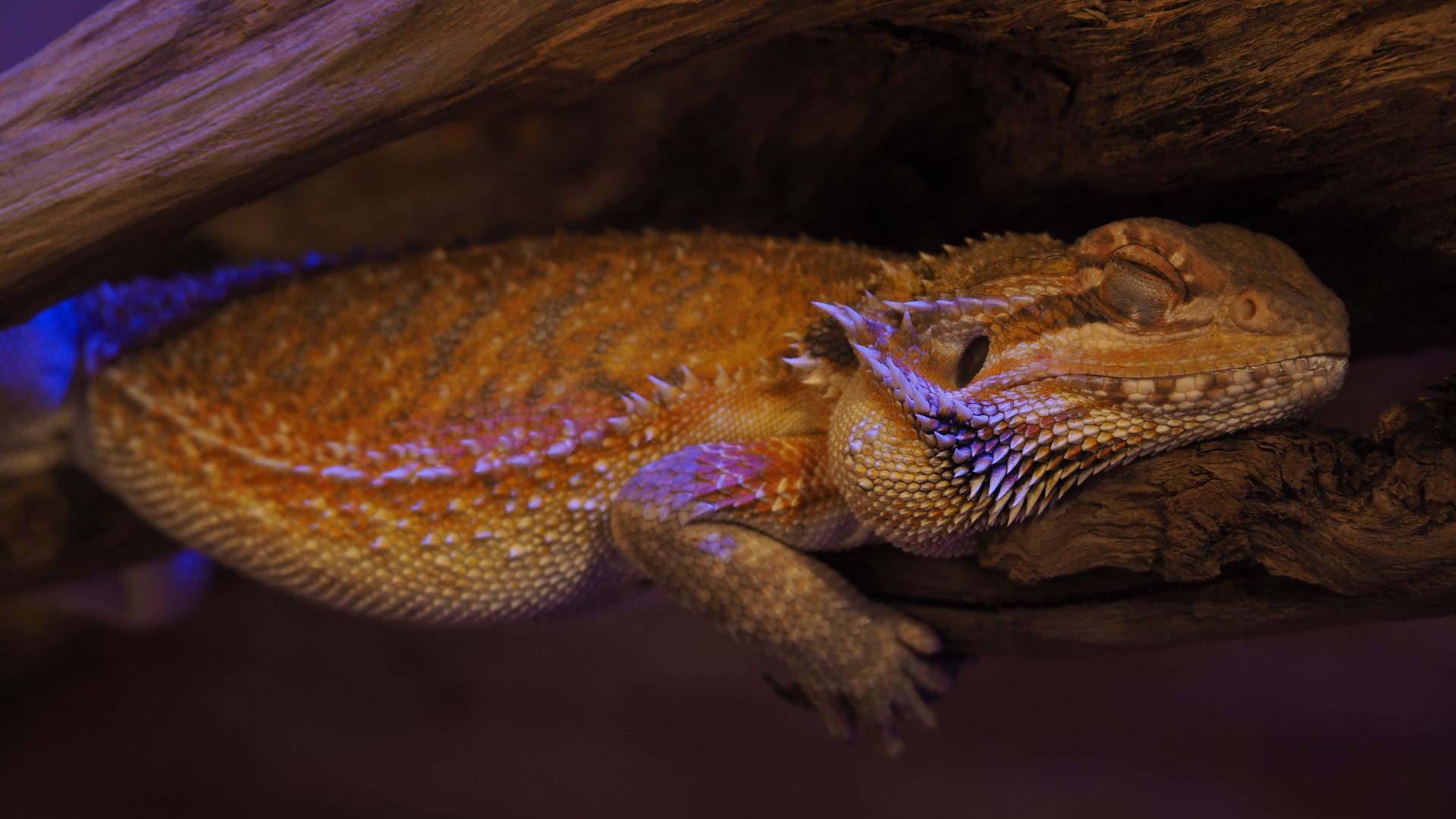
When first born these little hatchlings are around three inches long and weigh only a few grams. However, according to the RSPCA when fully grown, bearded dragons can grow to around 45cm, so they’ll need enough space to roam around.
Therefore a vivarium that’s 120cm long x 60cm high x 60 cm wide is the minimum size required.
16. They can sleep in all types of positions
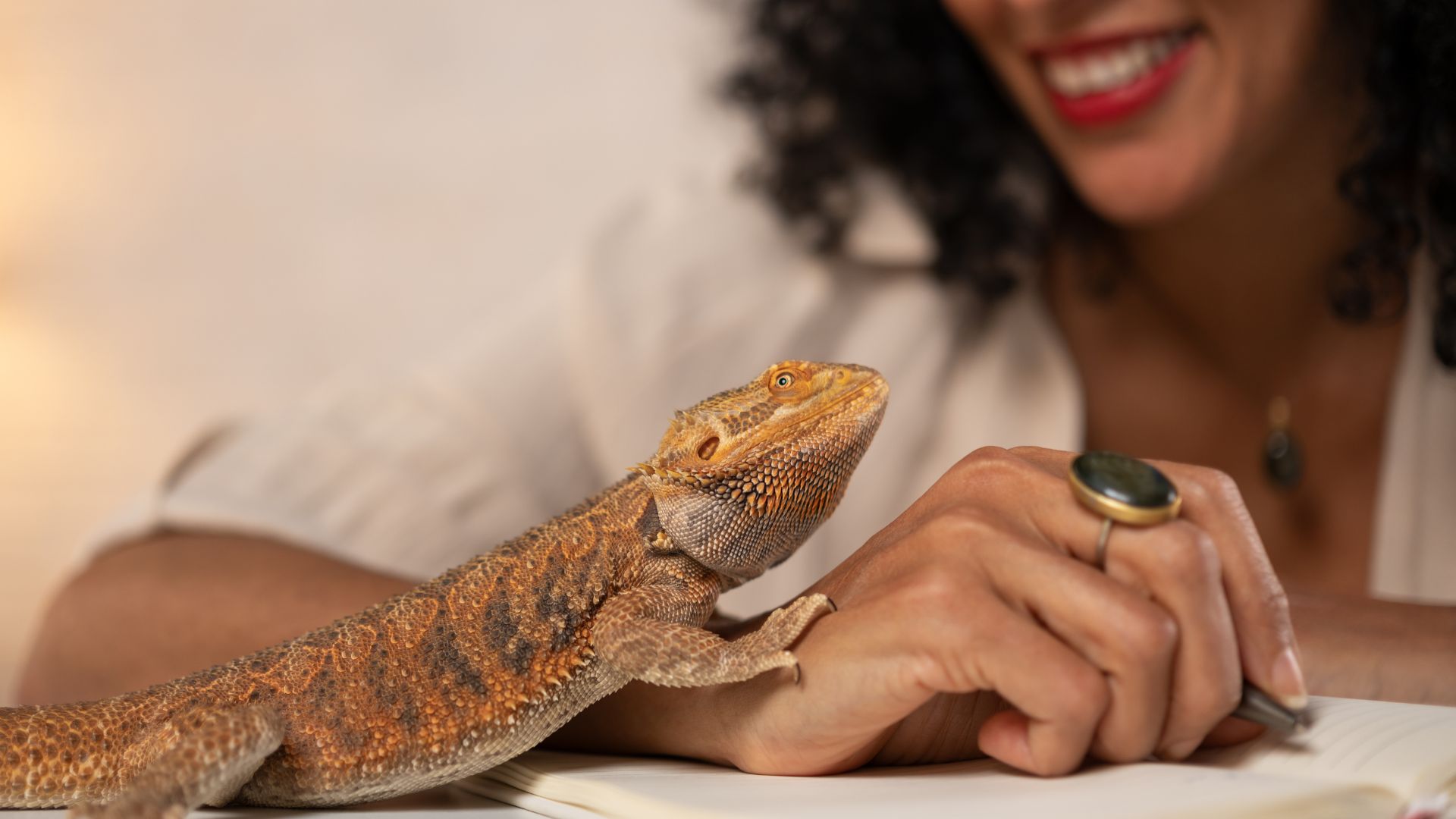
This includes standing up! Whether it’s propped up against a tree trunk, or leaning against the glass wall of their vivarium, these fascinating creatures aren’t precious about where they catch some ZZZs.
17. They like to be left alone
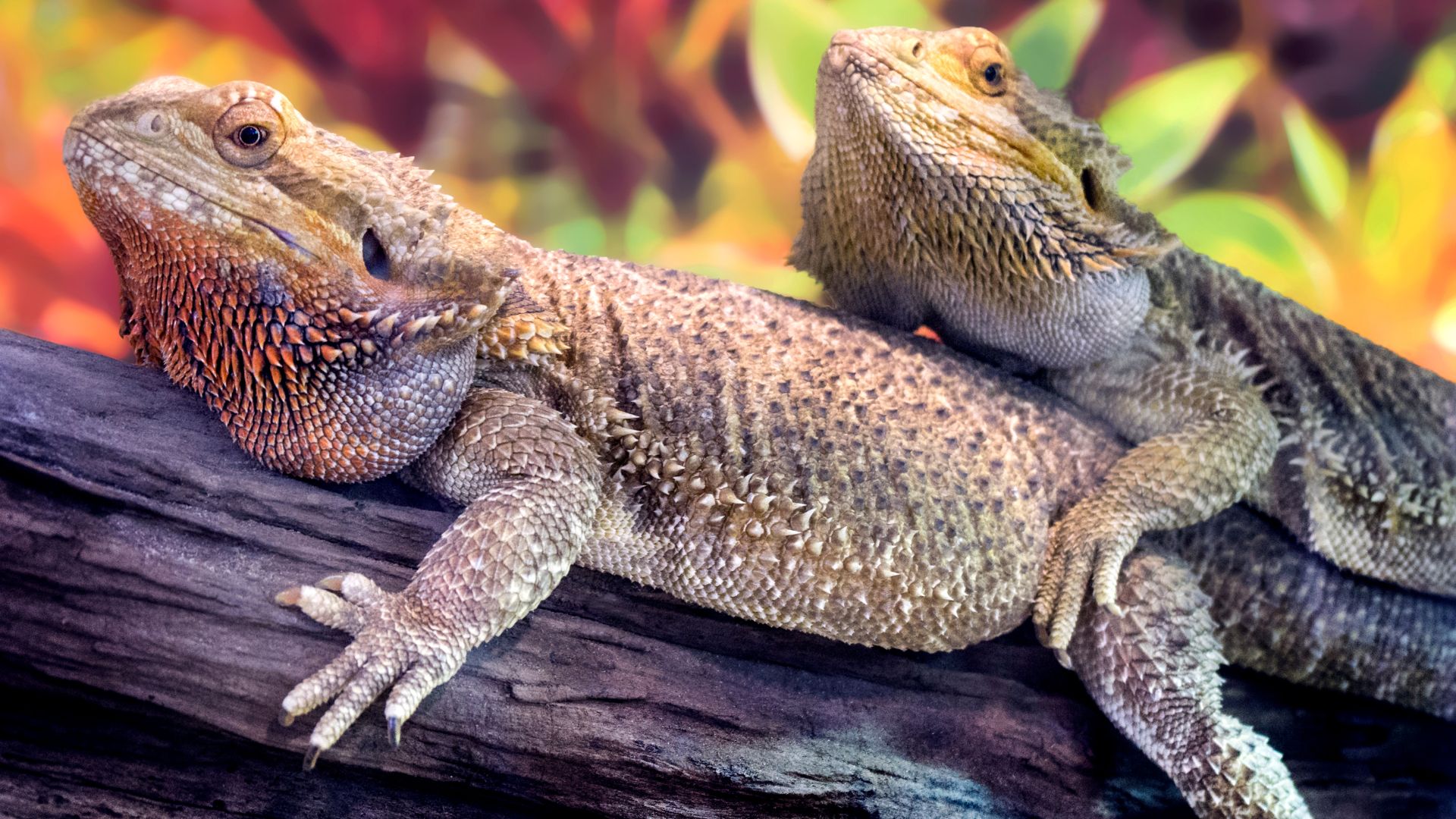
Bearded dragons tend to exist in solitude in the wild and when they are adopted into captivity, this is no different.
So as long as you are on top of their care, you've invested in the right food, and are providing light and heat, they’ll love spending time in their vivarium – alone!
18. Their waste is different

Another bizarre fact about bearded dragons? While humans and most other animals might urinate, a bearded dragon passes ‘powder’ called ‘urate’, which is white in color and has a chalky paste texture.
These clever creatures do this as a way to retain water, which was needed if they were living in the very hot Australian outback.
19. They can brumate

You might not have heard of this before. But according to the RSPCA, bearded dragons will tend to eat less, and generally slow down during the cooler months of the year. Some people describe this as a type of hibernation, but for lizards, this behavior is called brumation.
20. They love the warmth
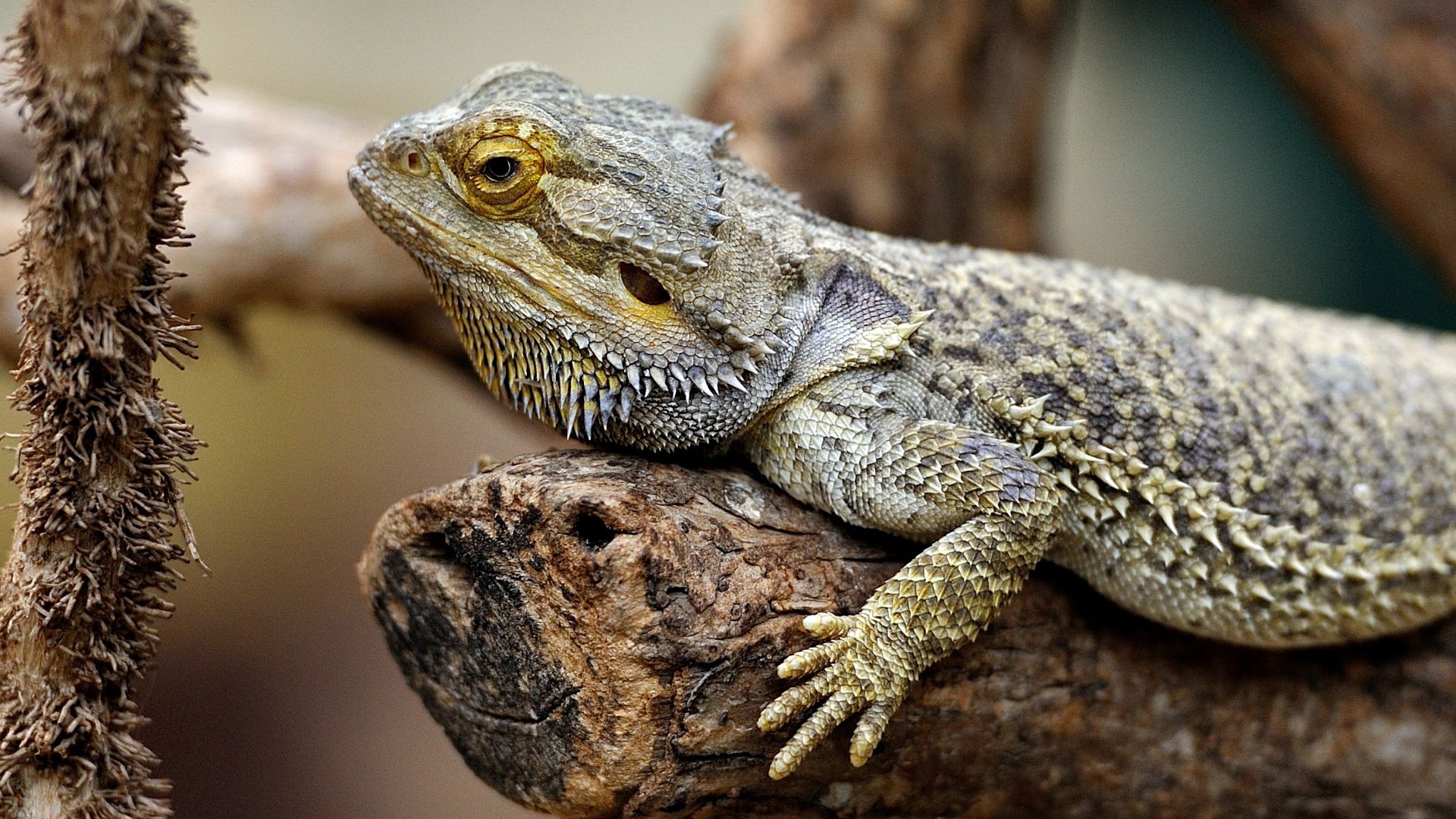
Keeping your reptile warm is a key part of bearded dragon care. Seeing as bearded dragons typically hail from sunny Australia, your beardie, which is cold-blooded, will need warm temperatures to thrive.
To help them raise their body temperatures they rely on external heat sources like the best reptile heating pads.
21. They aren’t picky eaters
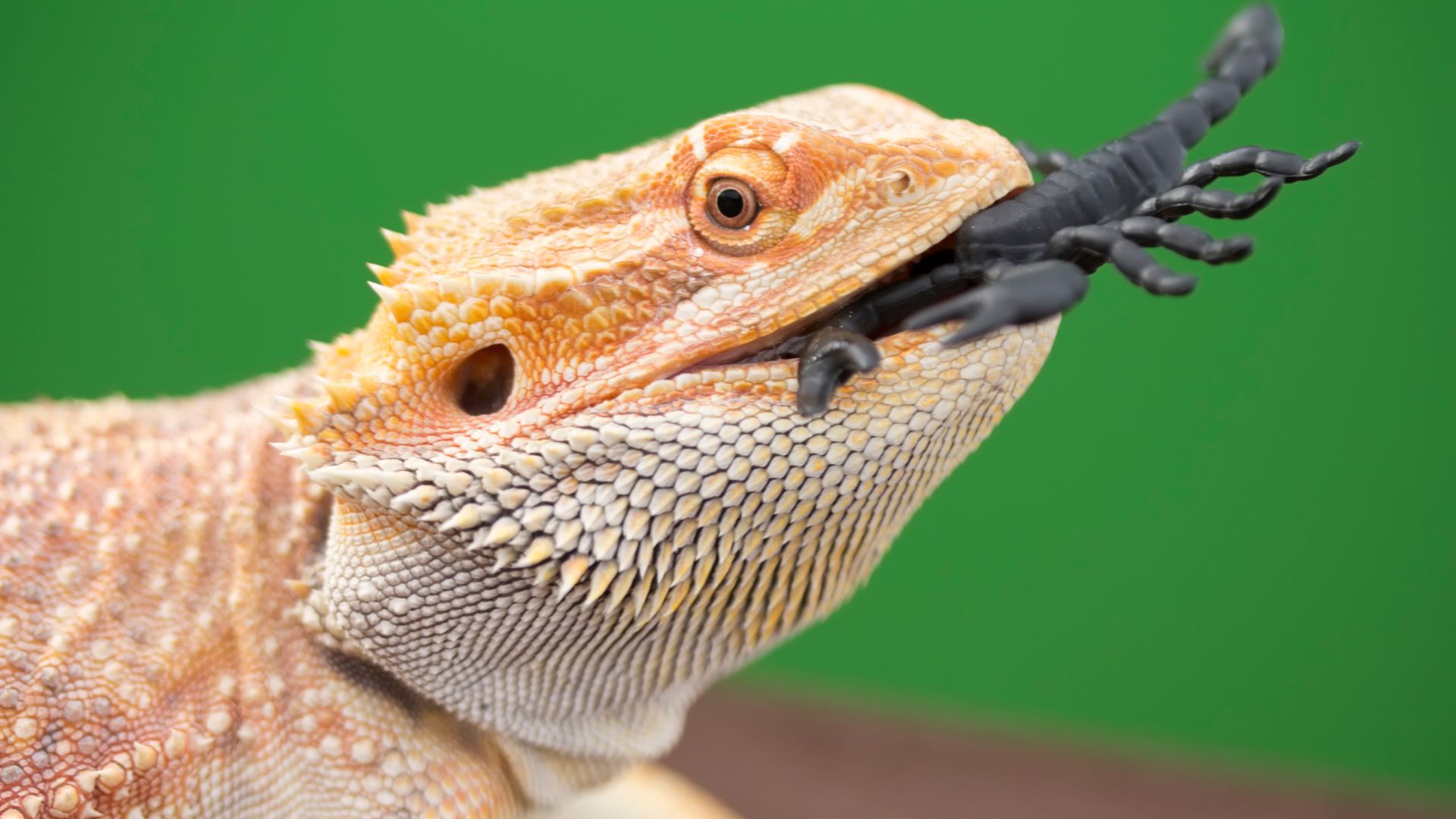
Beardies are partial to a varied diet. Seeing as they are technically omnivores, these reptiles can eat a range of fruits, vegetables, greens, and insects.
They are particularly partial to brown crickets as bearded dragons find them easy to catch and digest. While mealworms, cockroaches or wax worms can be given as a treat every now and then.
22. They are territorial
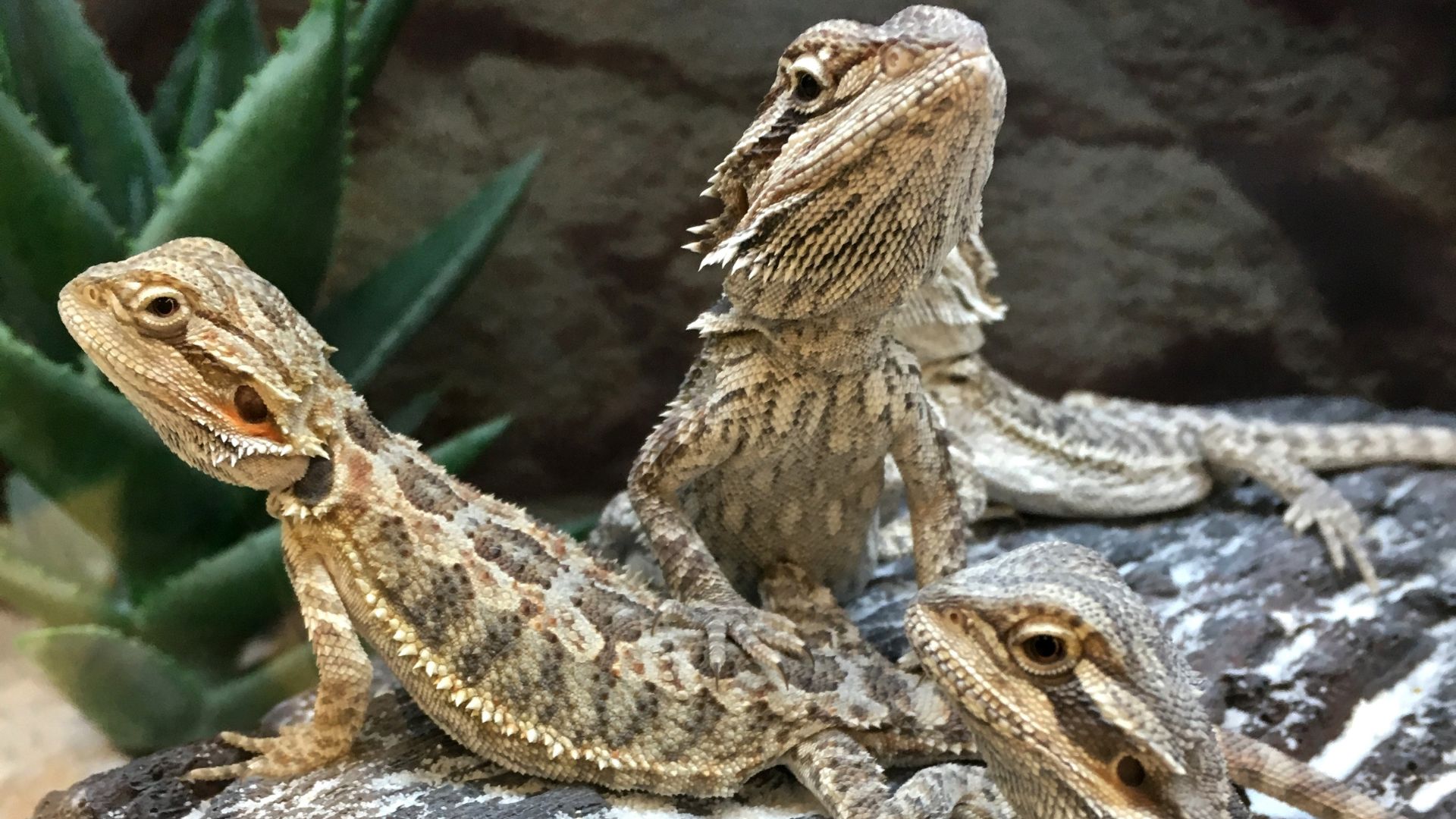
One common trait of a bearded dragon is that they are known for being territorial. Whether they are competing for food, defending their ground against another male, or throwing their hat into the ring for a female, beardies can show aggression when they feel like another bearded dragon is encroaching on their space.
23. Males like to impress females
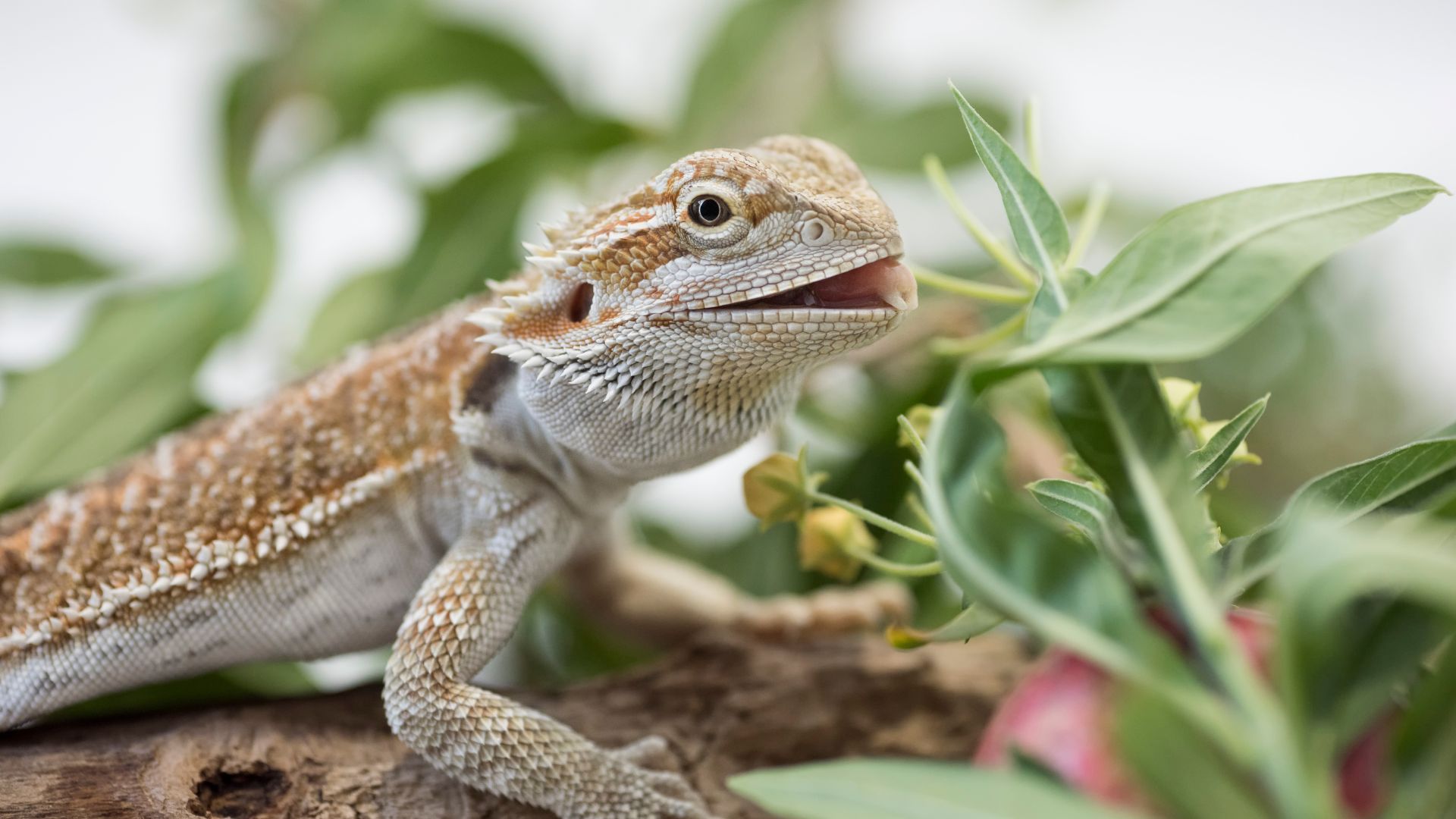
To get the attention of a female bearded dragon and impress her as a potential mate, a male will start to put on a 'show'. They do this by waving their arms, bobbing their head, ruffling their beard, and pounding their feet on the ground.
24. They can change sex
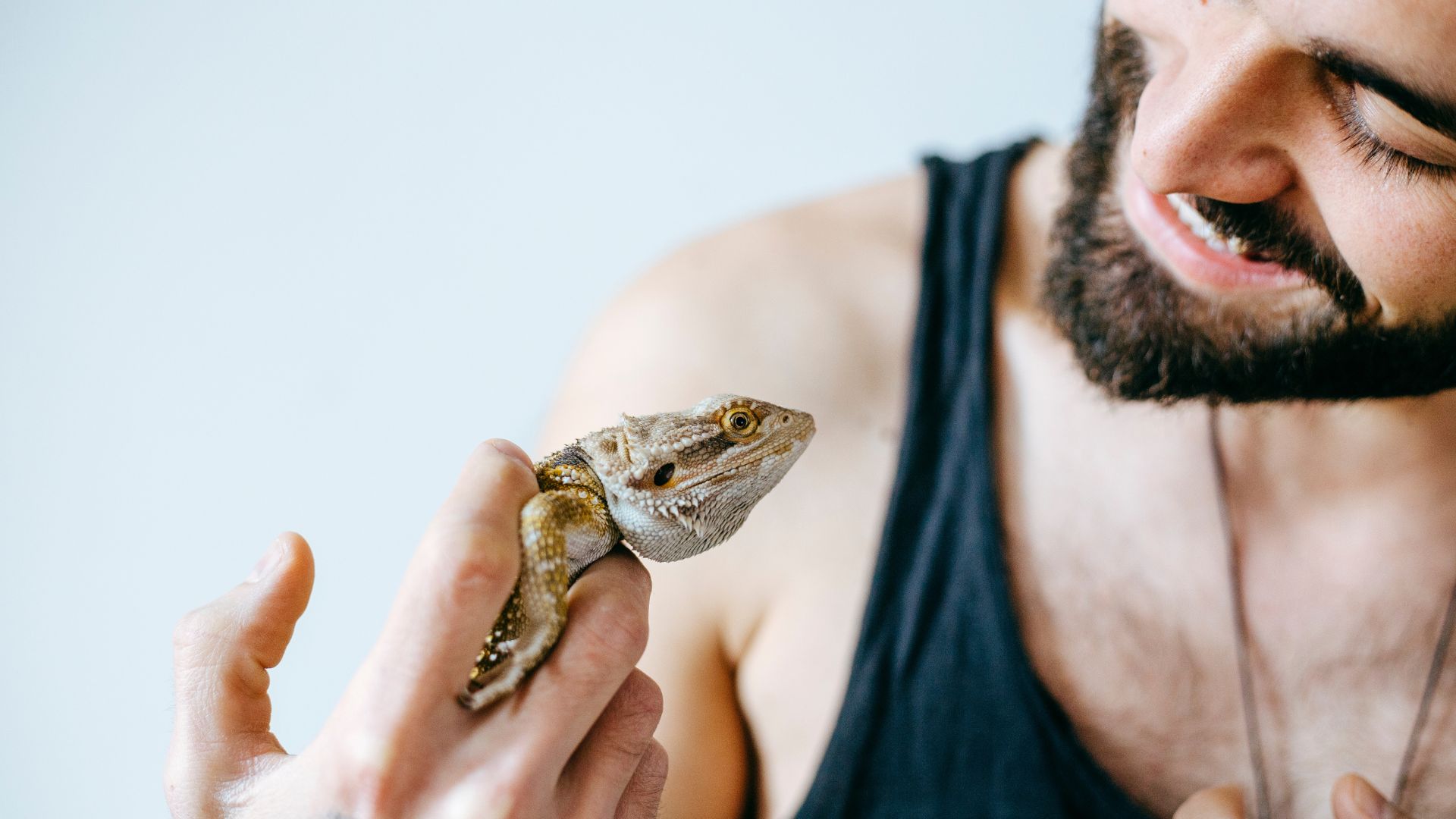
Another beguiling fact about bearded dragons? If there are high incubation temperatures when the embryo is being developed, a genetically male bearded dragon can be developed into a female beardie.
25. They have no discs
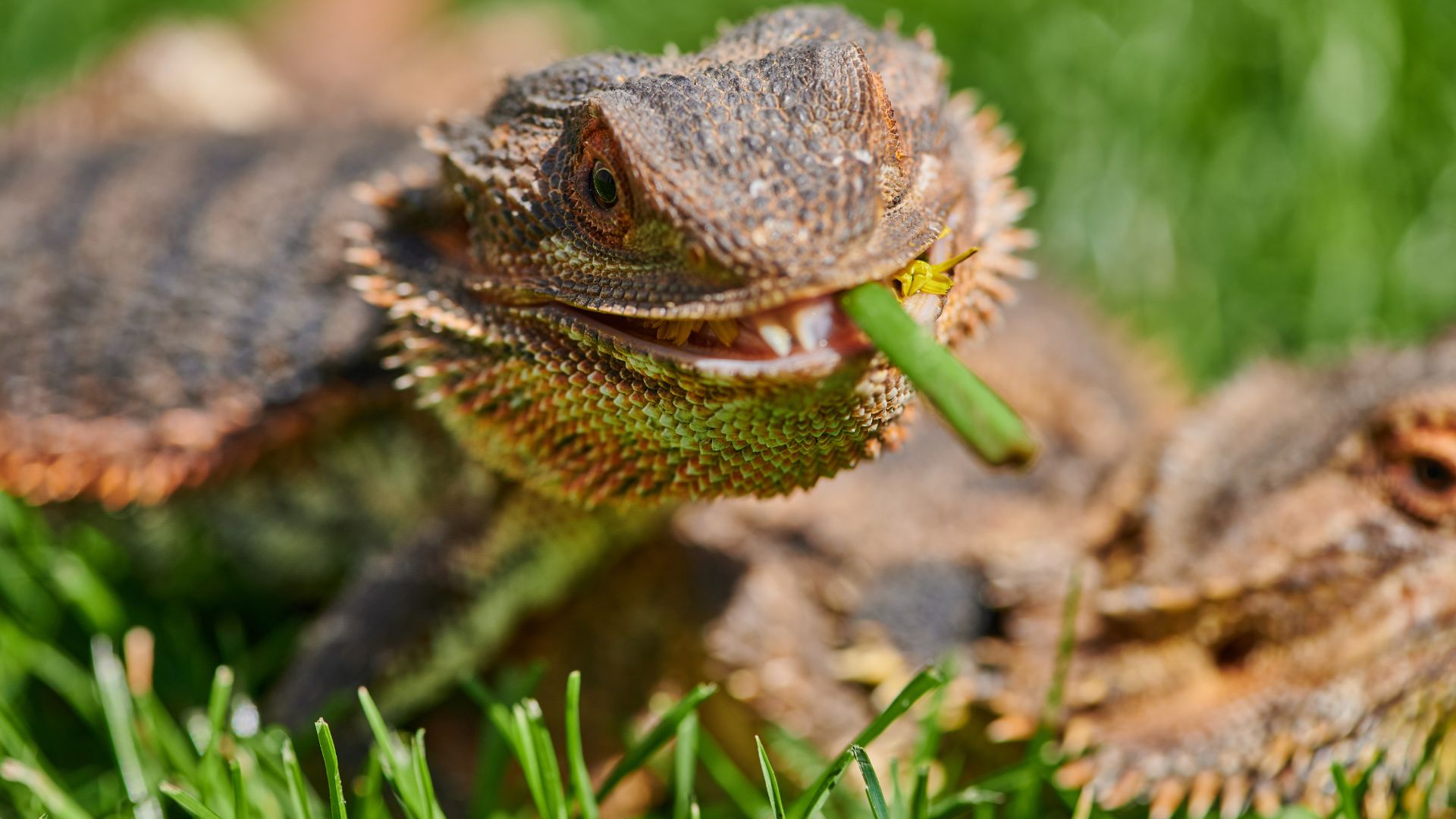
Bearded dragons have a spine, but unlike humans, they don’t have any vertebral discs. These all-important discs provide support, shock absorption, and mobility so without them, this lack of protection means beardies can damage their spines more easily.
26. They have three eyes
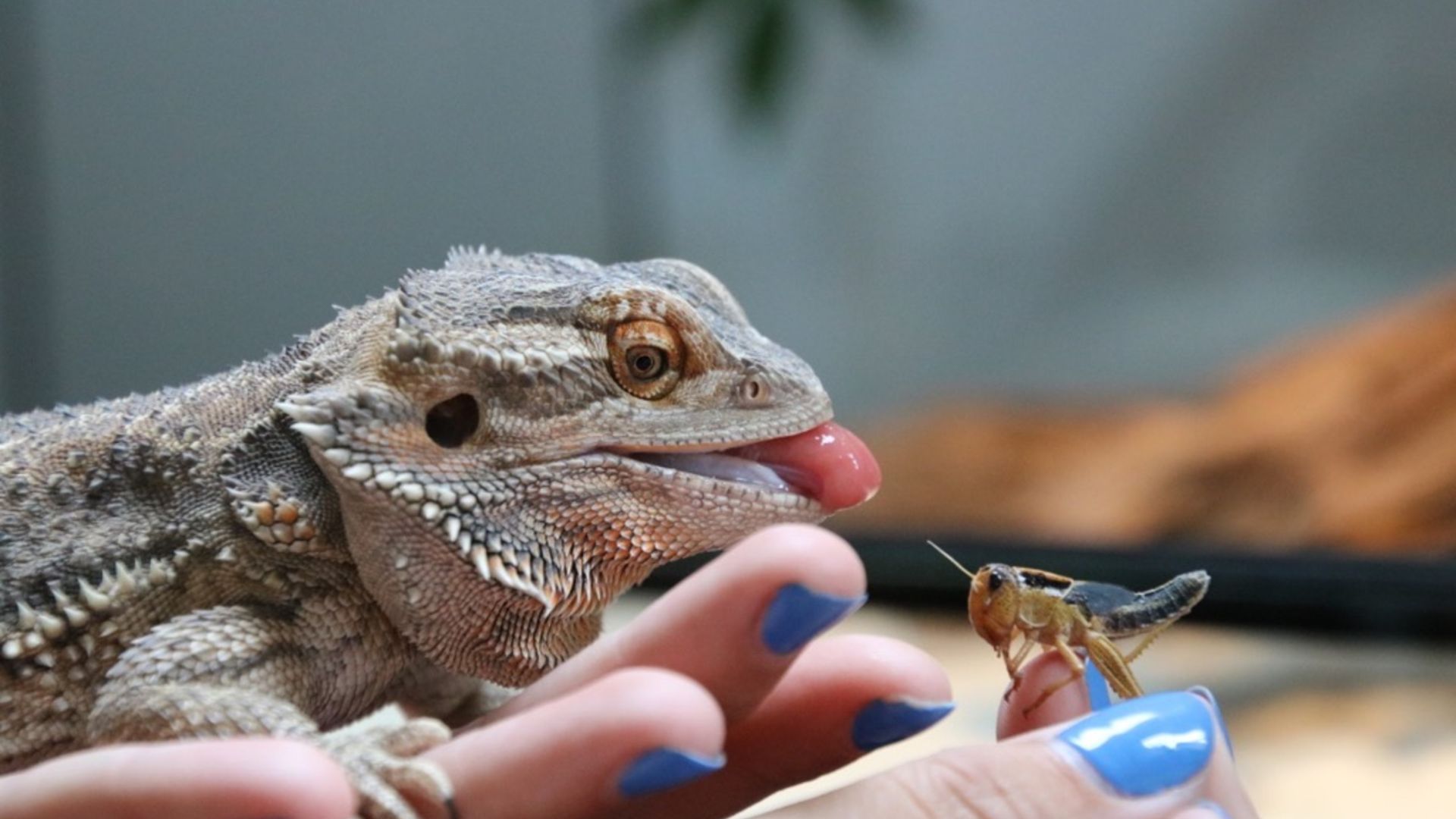
We're sure you would have spotted a bearded dragon’s two eyes on the side of its head. But you probably would have missed your beardies' third eye, which is hidden on the back of their head.
This third eye helps a bearded dragon detect changes in light, which can help keep them safe if a predator is approaching.
27. They are venomous
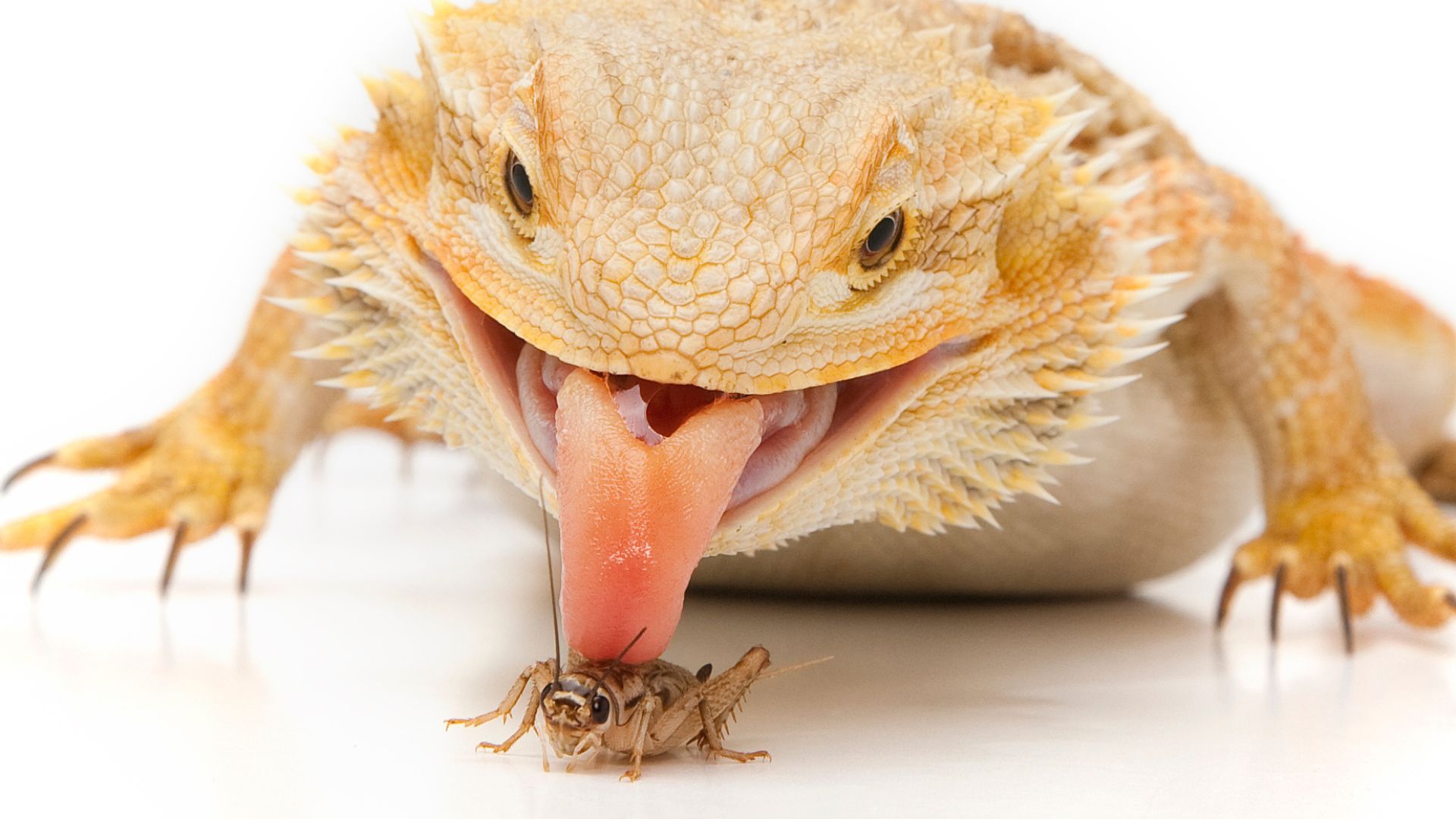
Did you know that bearded dragons are venomous? These types of reptiles produce the toxin crotamine in their mouth glands, which is the same substance that was previously known only from rattlesnake venom. But before you panic, you'll be pleased to know that this poison isn't potent enough to harm humans.
28. They shouldn’t be housed together
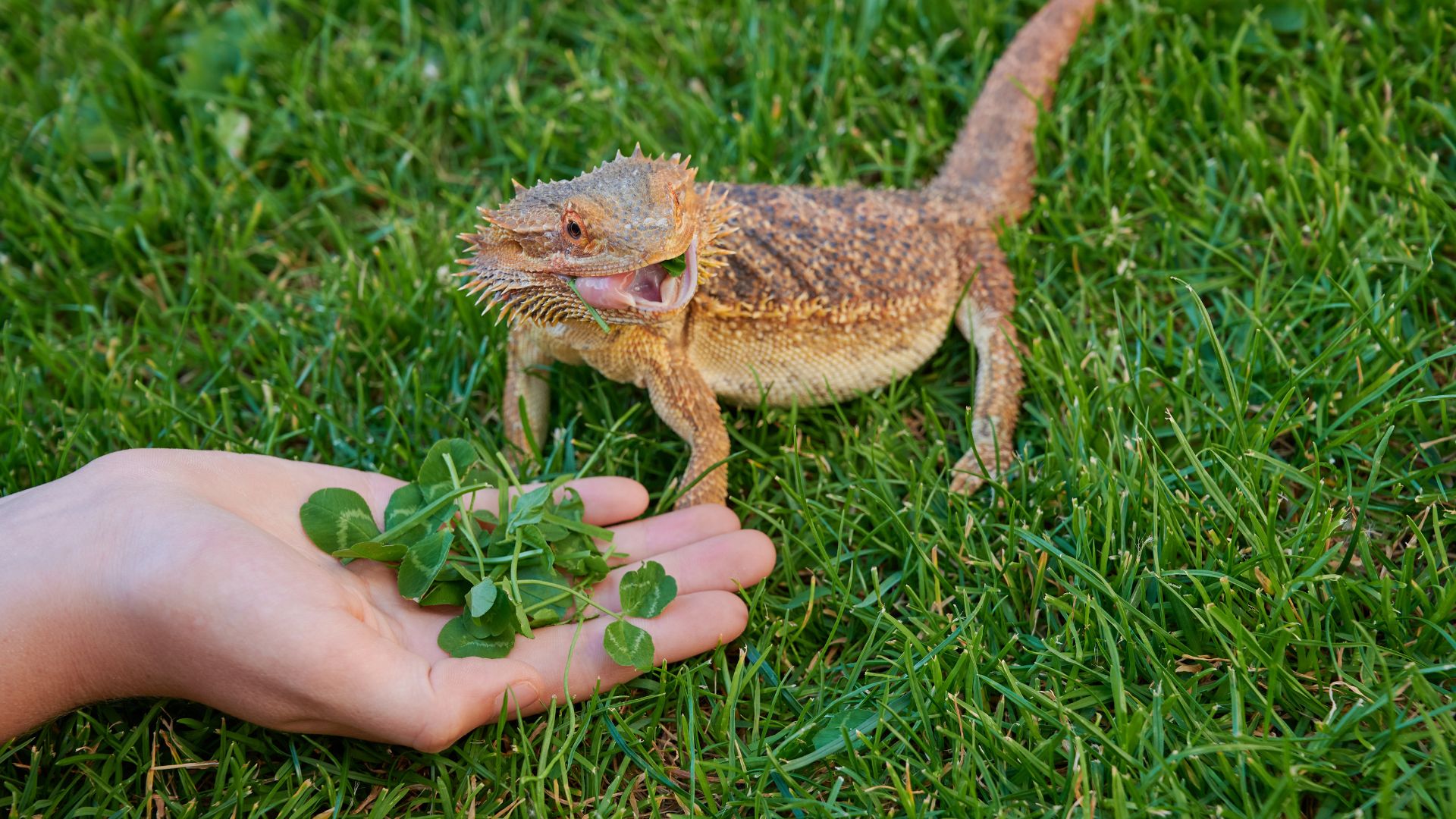
As we mentioned, bearded dragons are solitary scale friends. Housing more than two together results in one dragon taking the dominant role, eating the food, water and other necessary vivarium features like the heating pads, which bearded dragons need to survive.
In some cases, males may even fight. Therefore, if you intend to keep more than one beardie, keeping them in separate enclosures is best.
29. They live longer in captivity than in the wild
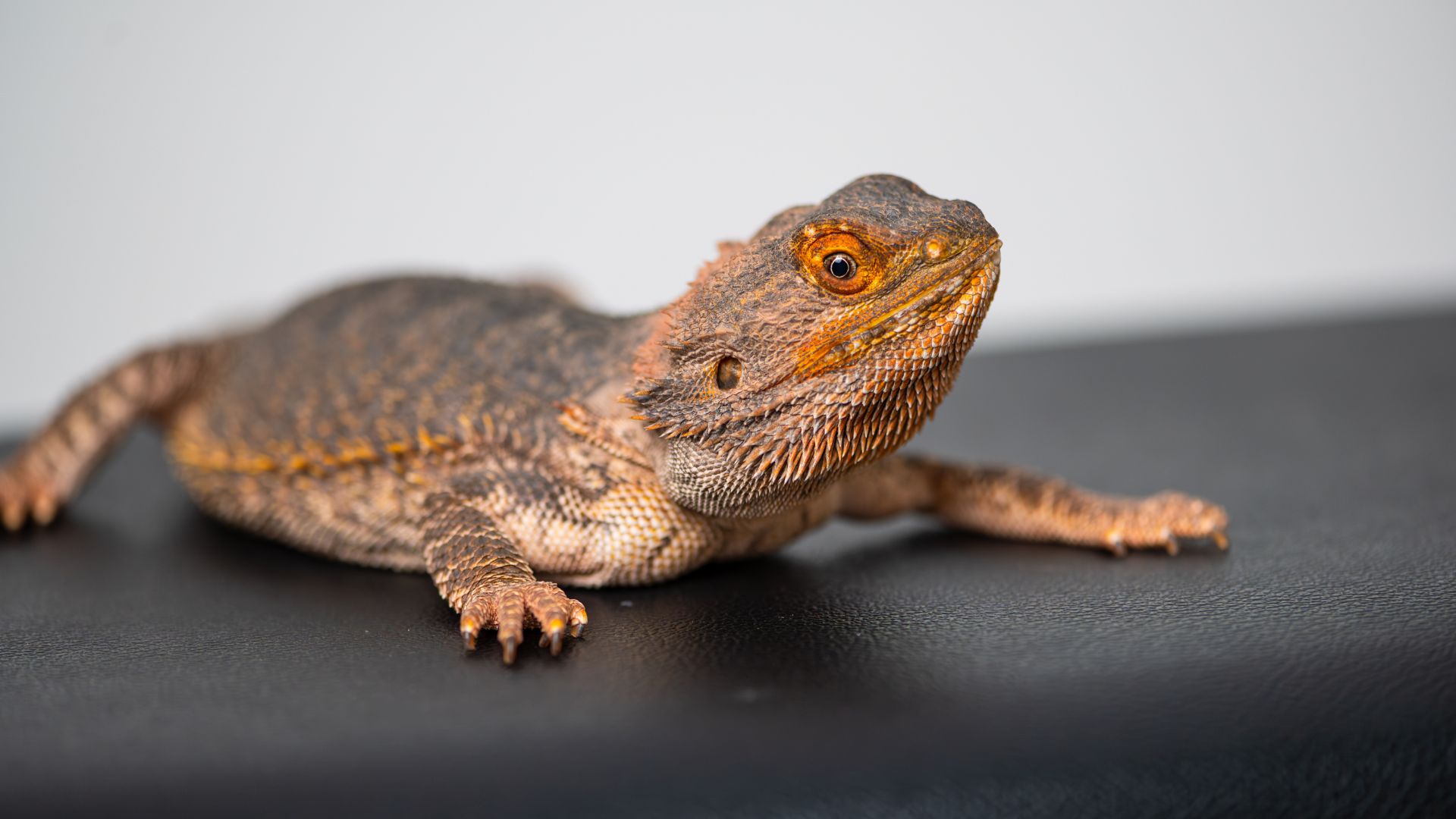
In the US, bearded dragons are bred in captivity because vets have found that with the right TLC, these domesticated creatures can live longer than their counterparts in the wild.
Domestic beardies can live around eight to 10 years, or longer, while the typical lifespan for a wild reptile of this kind is anywhere between four to eight years because of lack of consistent food, water, and veterinary care.
30. They smell with their tongue
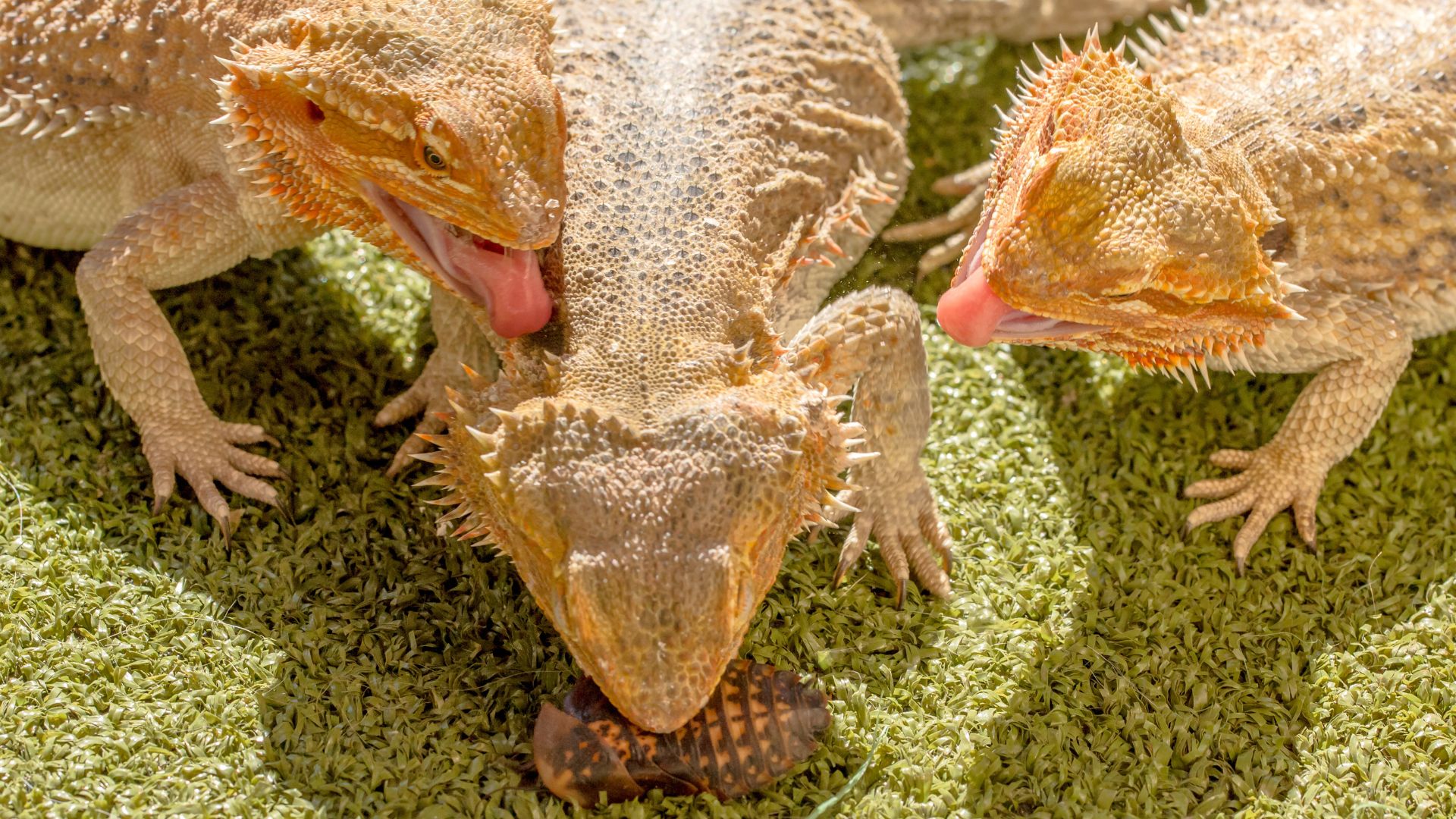
It comes as no surprise to hear that humans capture small tiny particles through their nose that their brain interprets as odor.
But bearded dragons do this via their tongue. If you’ve adopted a beardie you probably would have spotted them poking out their tongue to capture scent particles in the air. That’s because they have a 'Jacobson's organ' on the roof of their mouth allowing them to detect chemical signals.
31. They have a three-chambered heart
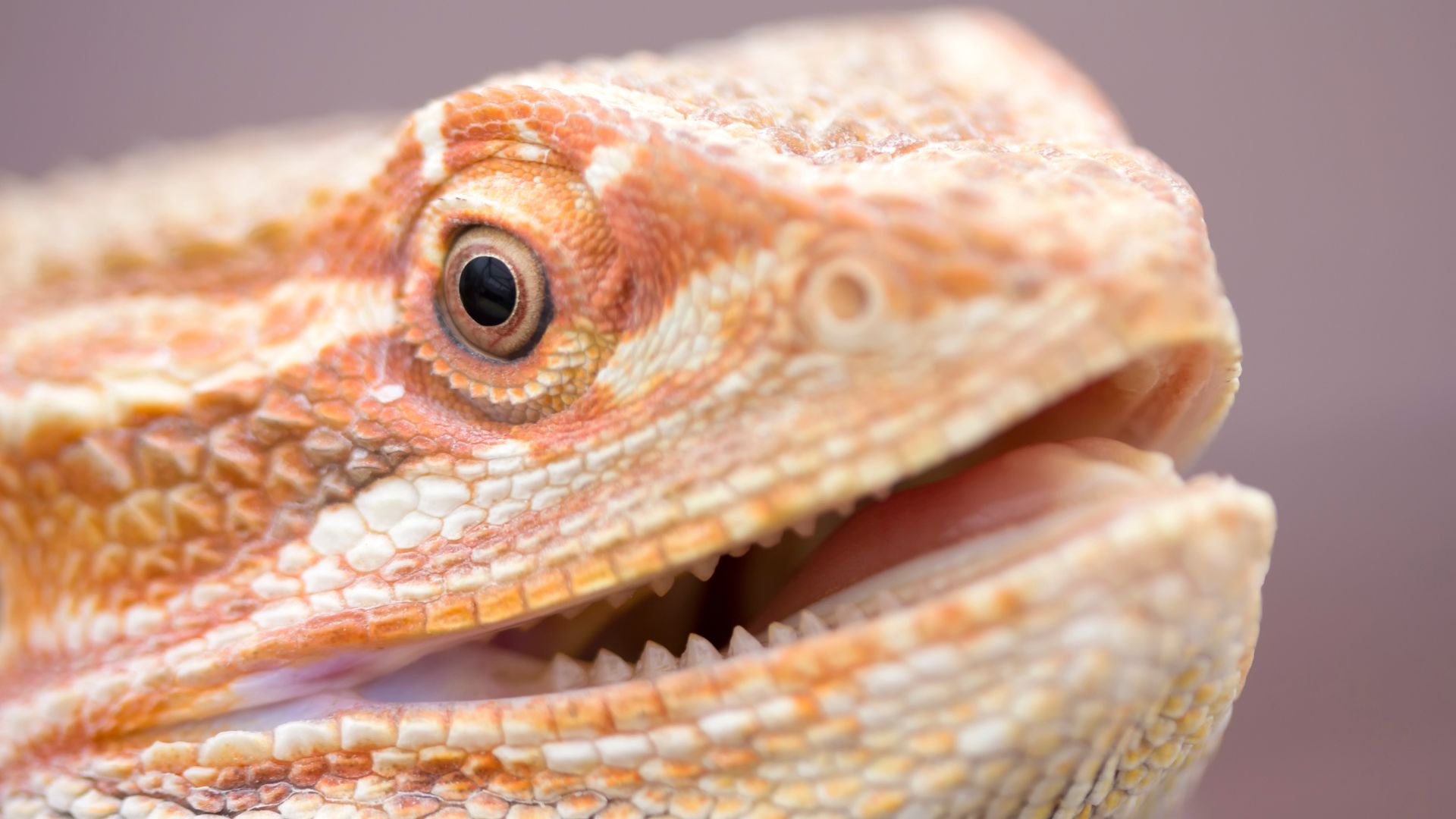
Unlike our friends in the fish world who have a two-chambered heart, or mammals, like dogs, cats, or humans who have a four-chambered heart – bearded dragons are reptiles and therefore have a three-chambered heart.
32. They have interesting behavior
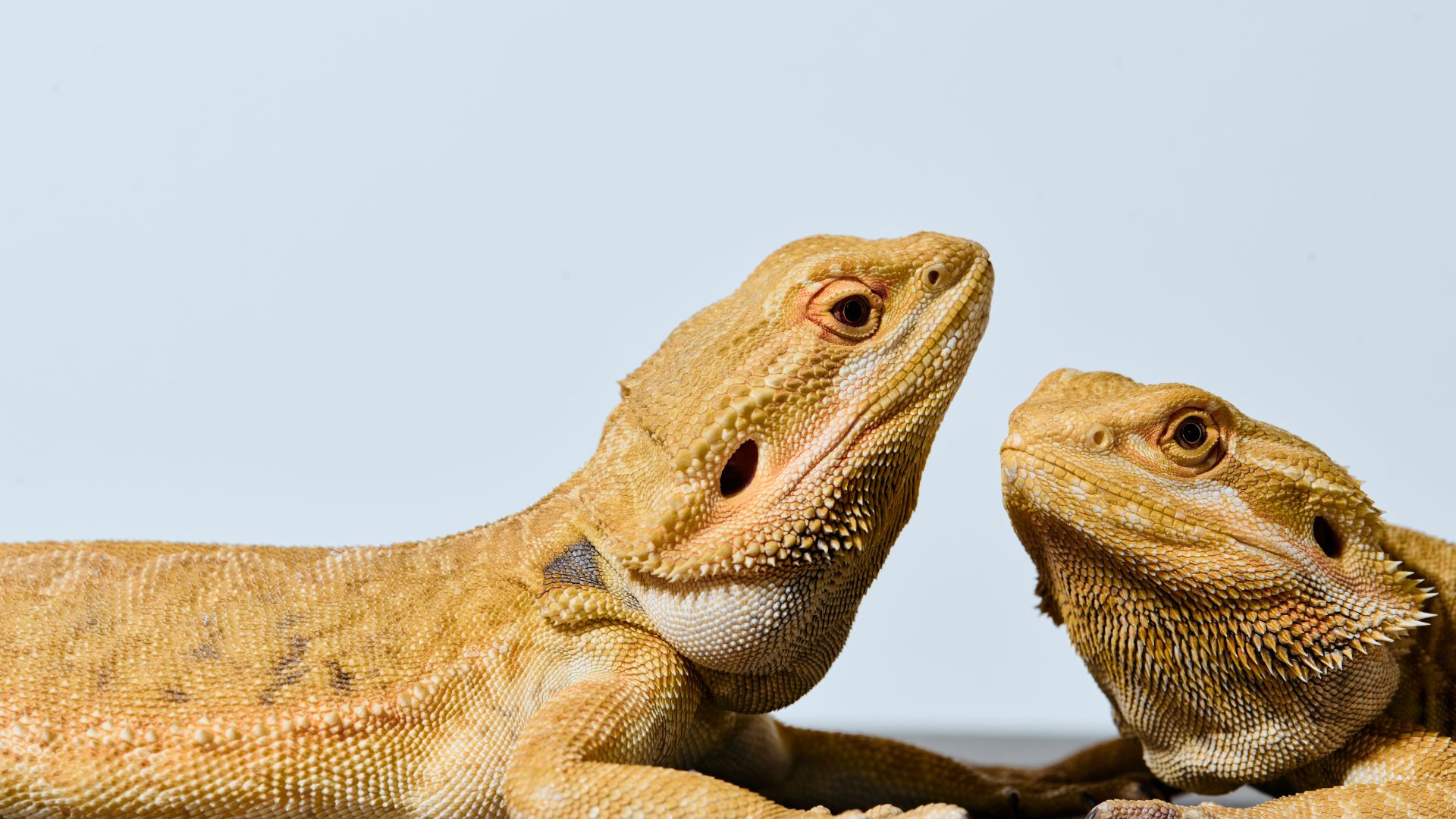
If there’s one reptile that’s simply fascinating, it’s the beloved bearded dragon. From its anthropomorphic body language, like head bobbing or waving to beardies ‘glass surfing’ i.e. standing up on their hind legs with their paws on the side of the vivarium – bearded dragons really are a one-of-a-kind animal and, if you adopt one, the fascination with your scaly friend will never end.
Wondering how long can bearded dragons go without heat? We asked a vet and here is what they had to say.

Becks Shepherd is a lifestyle journalist who has worked with titles such as Tom's Guide, Marie Claire, and Fit and Well.
In addition to this, she’s a pet writer with nearly a decade of editorial experience across digital and print media. A devoted “dog aunt” and lifelong animal lover, Becks brings a personal touch to her pet content—whether she’s testing the latest dog gear or digging into behavioral tips.
She works closely with veterinary experts to ensure factual accuracy and is currently exploring animal care certifications to deepen her knowledge. Her work has appeared in leading outlets across health, wellness, and pet care spaces.
